Do your iPhone portrait photos end up as a cluttered mess rather than a beautiful masterpiece? If so, it’s likely you’re not paying attention to what’s behind your subject. In portrait photography, the background is just as important as the person you’re photographing. The perfect backdrop should add subtle interest to the scene and create just the right mood, without taking attention away from the subject. In this tutorial you’ll discover 11 tips for finding amazing backdrops that will instantly improve your iPhone portrait photos.
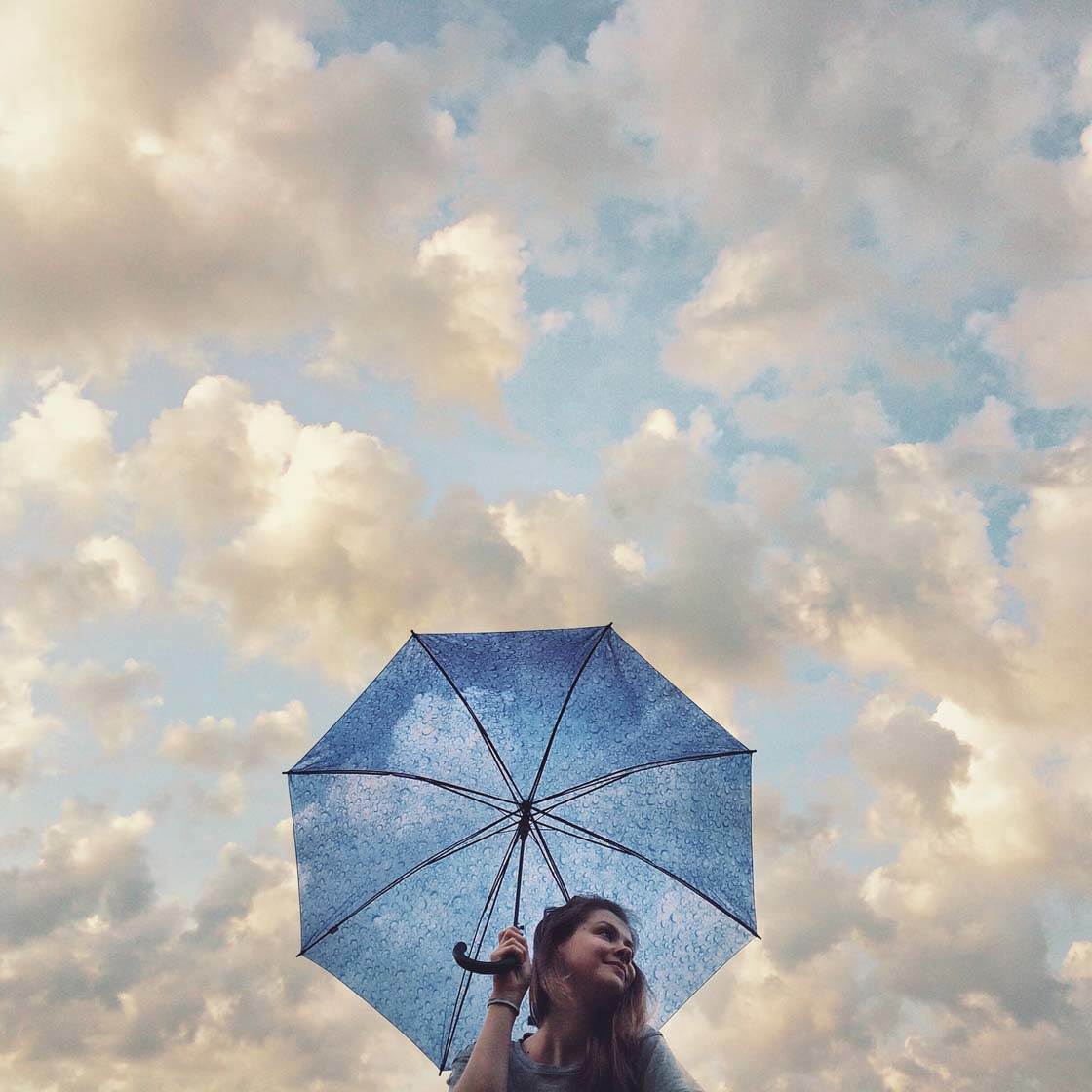
1. Keep It Simple
A great portrait photo can be ruined by a bad background, but this is often forgotten. If there’s too much distraction in the background, the viewer’s attention will be taken away from your subject and the photo will have less impact.
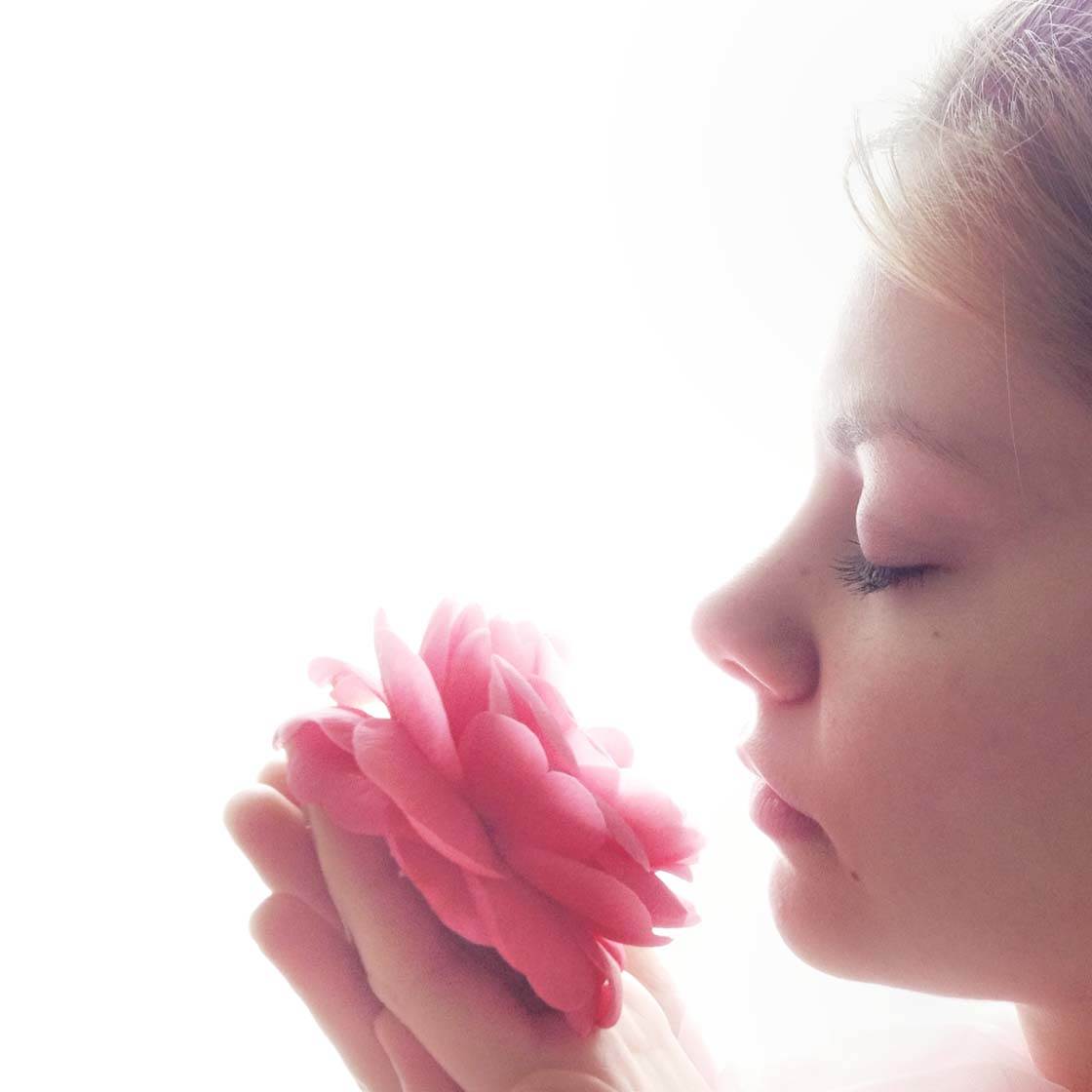
A good backdrop should complement the subject without competing for attention. So one of the first rules in portrait photography is to keep the portrait background simple and uncluttered.
A plain white or black background shouldn’t be underestimated. They’re great for ensuring all of the viewer’s attention is focused on the subject.
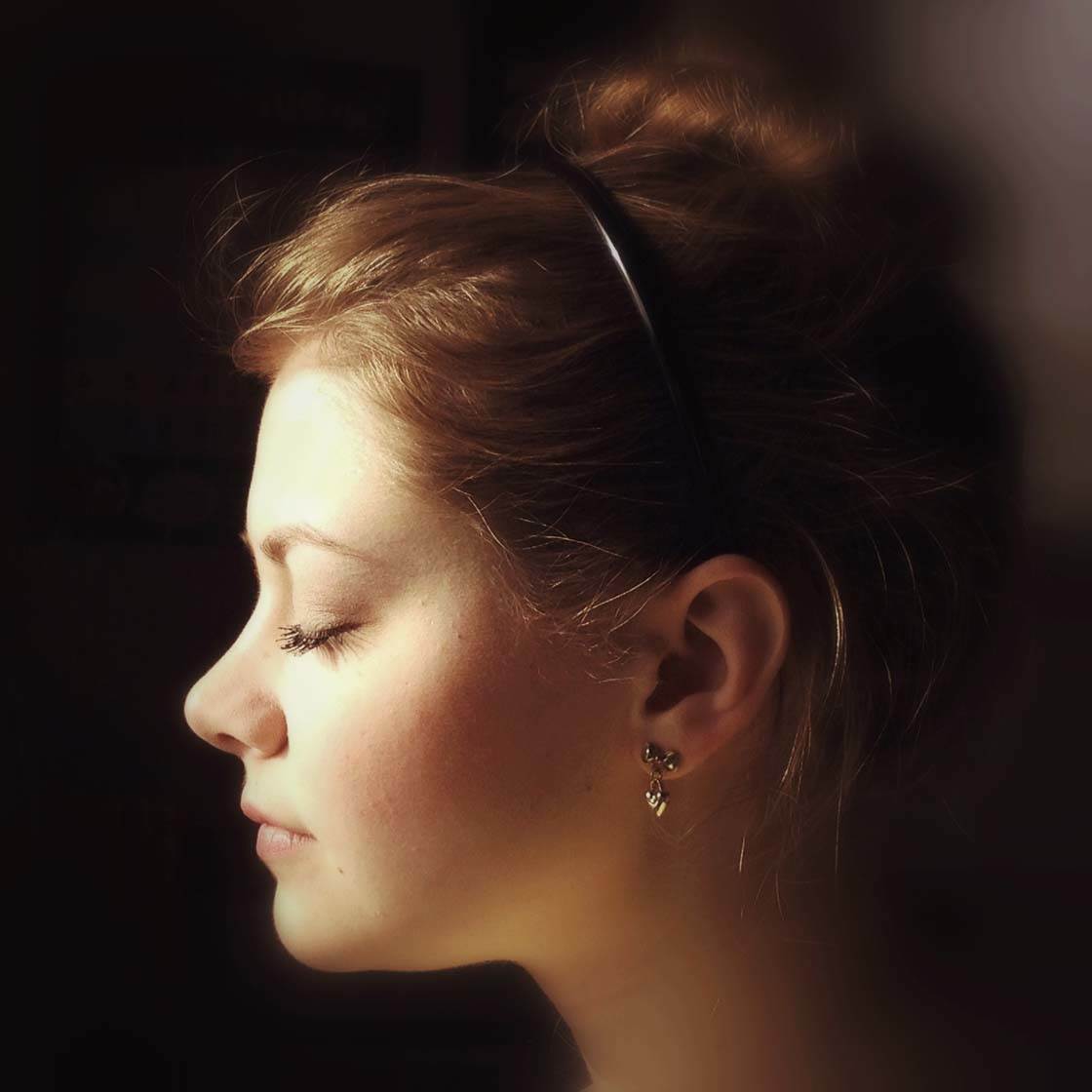
But a simple background doesn’t mean it has to be completely plain. It just means that the background shouldn’t take attention away from the subject. The background should always complement the main subject, rather than competing for attention.
Train your eye to search out good backgrounds for portrait photography. Whether you’re walking down the street, exploring the countryside, or wandering through a building, keep your eye out for good, simple backgrounds.
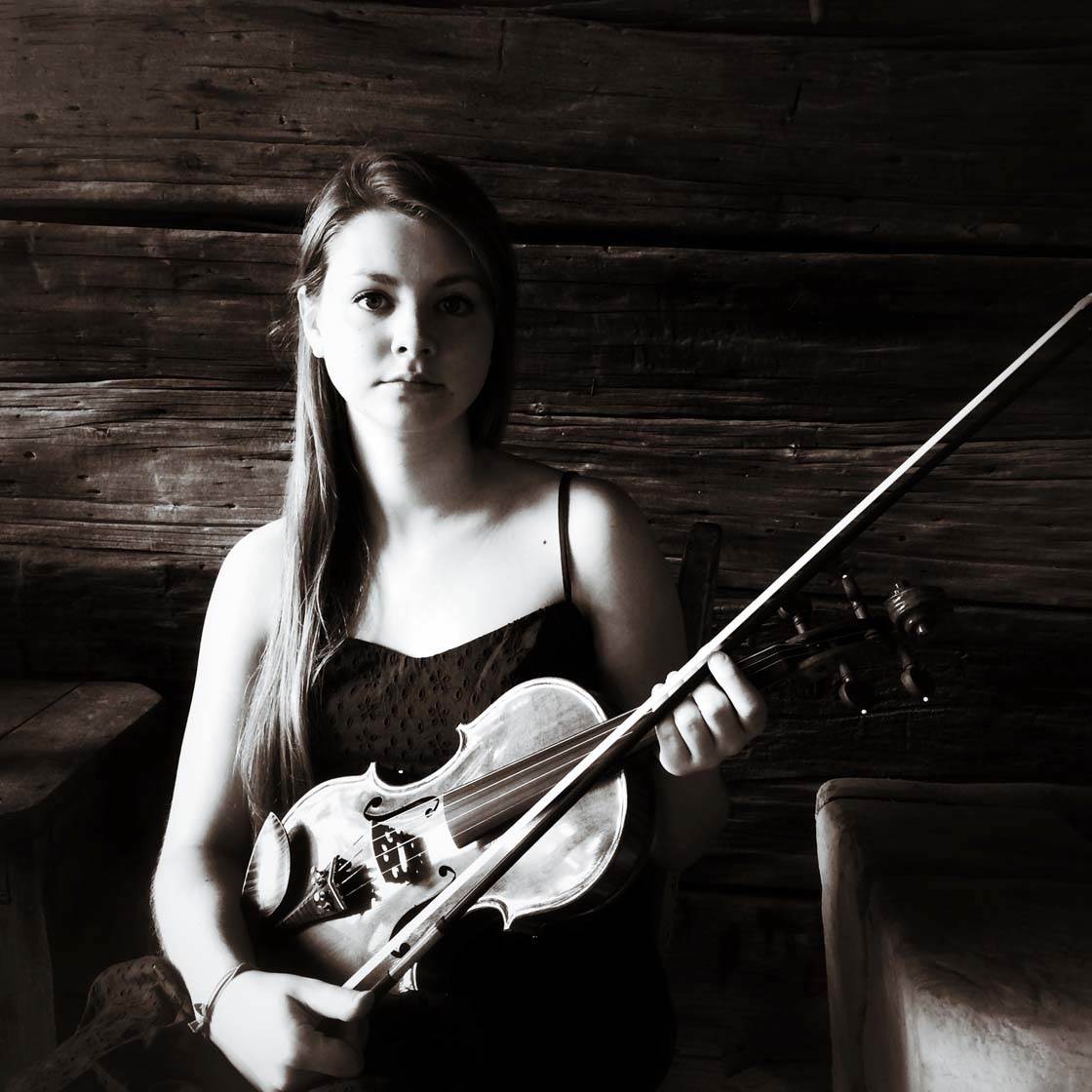
Look around and imagine how these different locations would look if you positioned a person in front of them. A simple wall can often make the perfect background.
Before you take the shot, check if there’s anything distracting in the background. If you can move that distraction, make sure you do so – it will make all the difference.

The great thing about photographing people is that you can easily move your subject, so if you’re not happy with the background, simply move the person to a different location – this may only need to be a few feet away.
You can also use Portrait mode to simplify the background.
Whatever you use for your background, always ask yourself whether the main subject stands out well. If they don’t, then the photo is unlikely to be a success. Taking the time to look around for a simpler background will definitely be worth it.
2. Use The Sky As Your Background
The sky makes an excellent clean and simple background for your portrait shots. Photographing your subject with the sky as the backdrop ensures there are no distractions in your image.
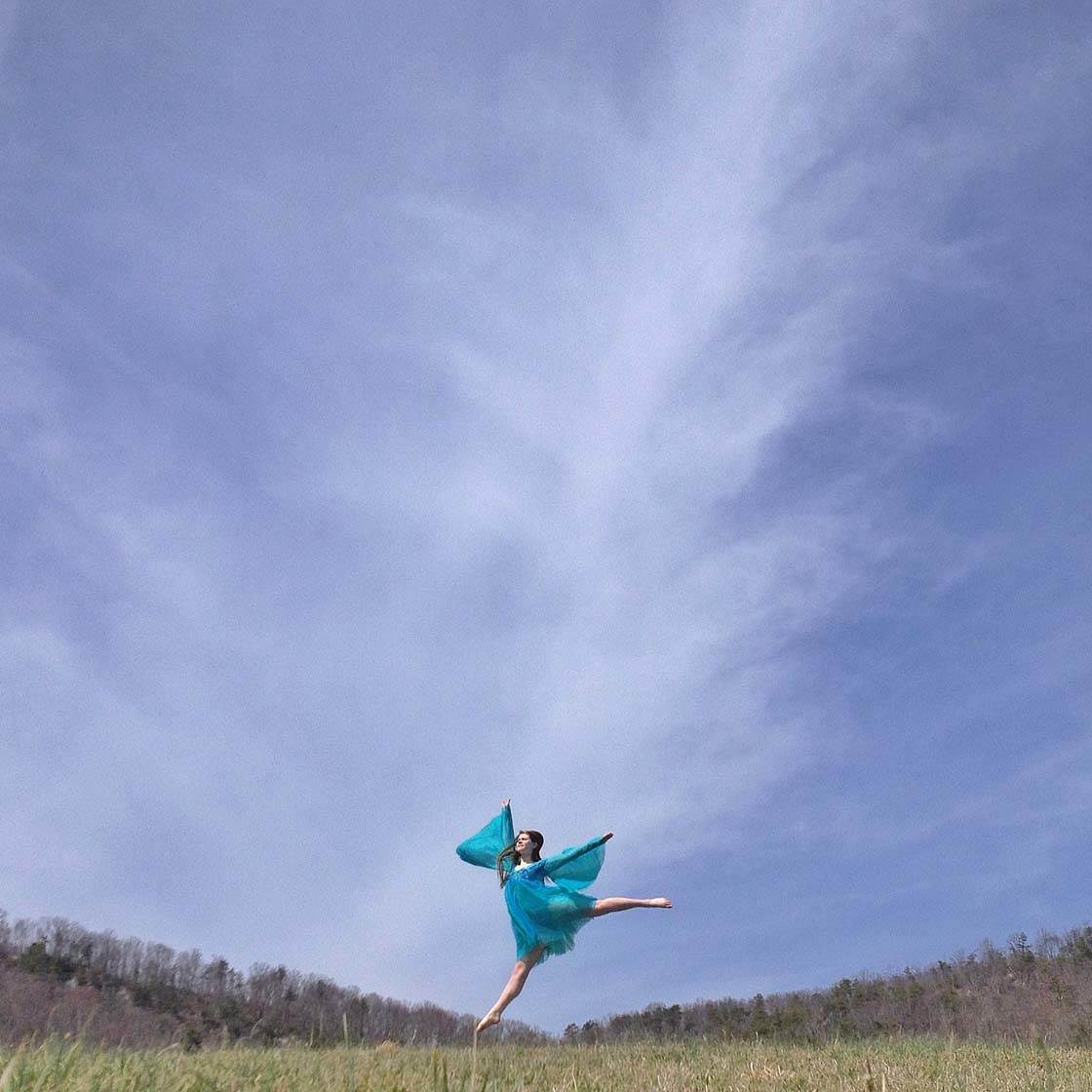
In addition to that, you’ll end with a lovely colored background whether you shoot against a bright blue sky or the orange of sunrise and sunset. Cloud formations will add extra interest to the image.

Shooting from a low angle will allow you to get more sky behind your subject. If you shoot from a low enough angle you’ll be able to completely eliminate any objects from the ground which might otherwise draw attention away from your subject.
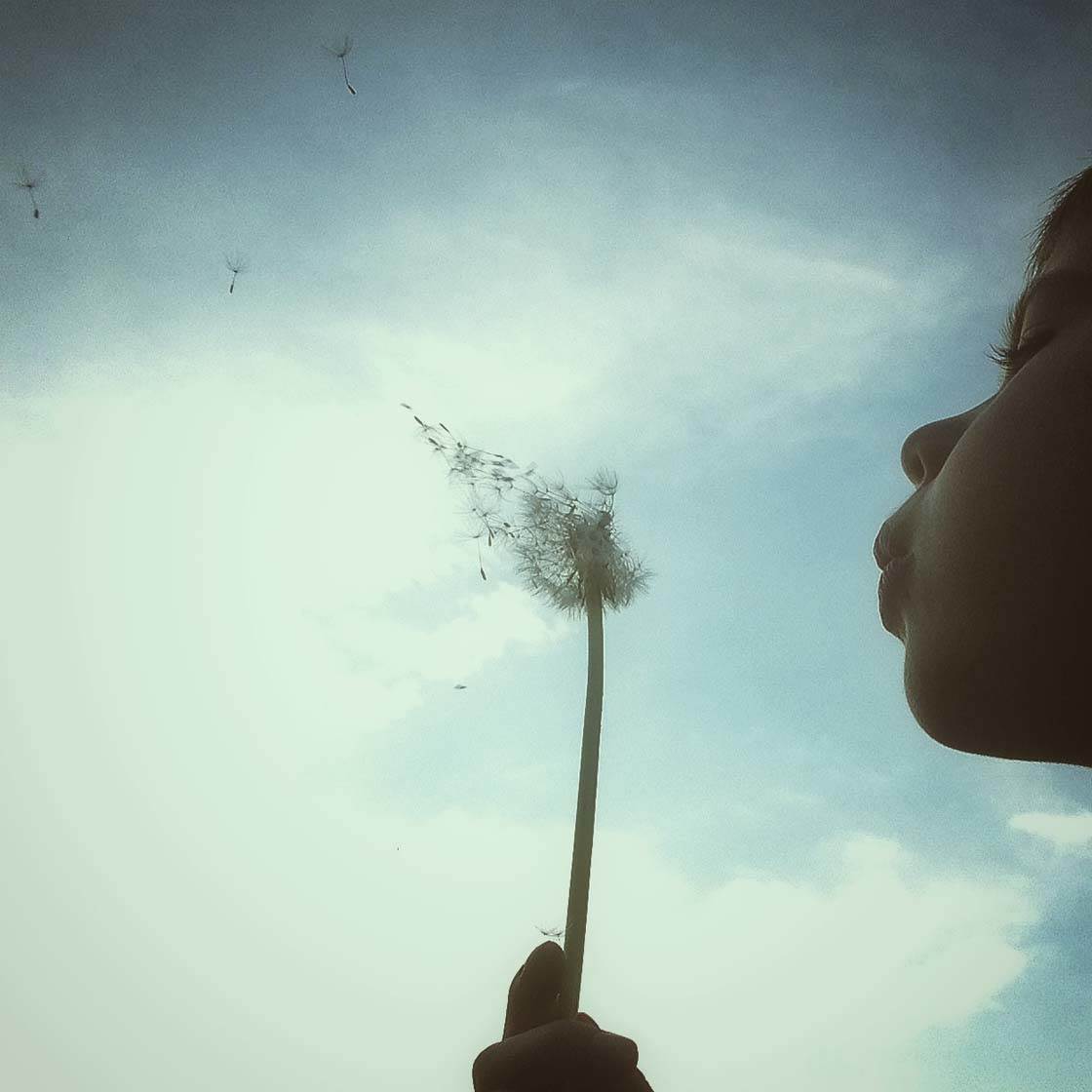
If you shoot during the golden hours of sunrise and sunset, when the sun is low in the sky, you’ll be able to create beautiful portrait silhouette photos with amazing colors in the background.
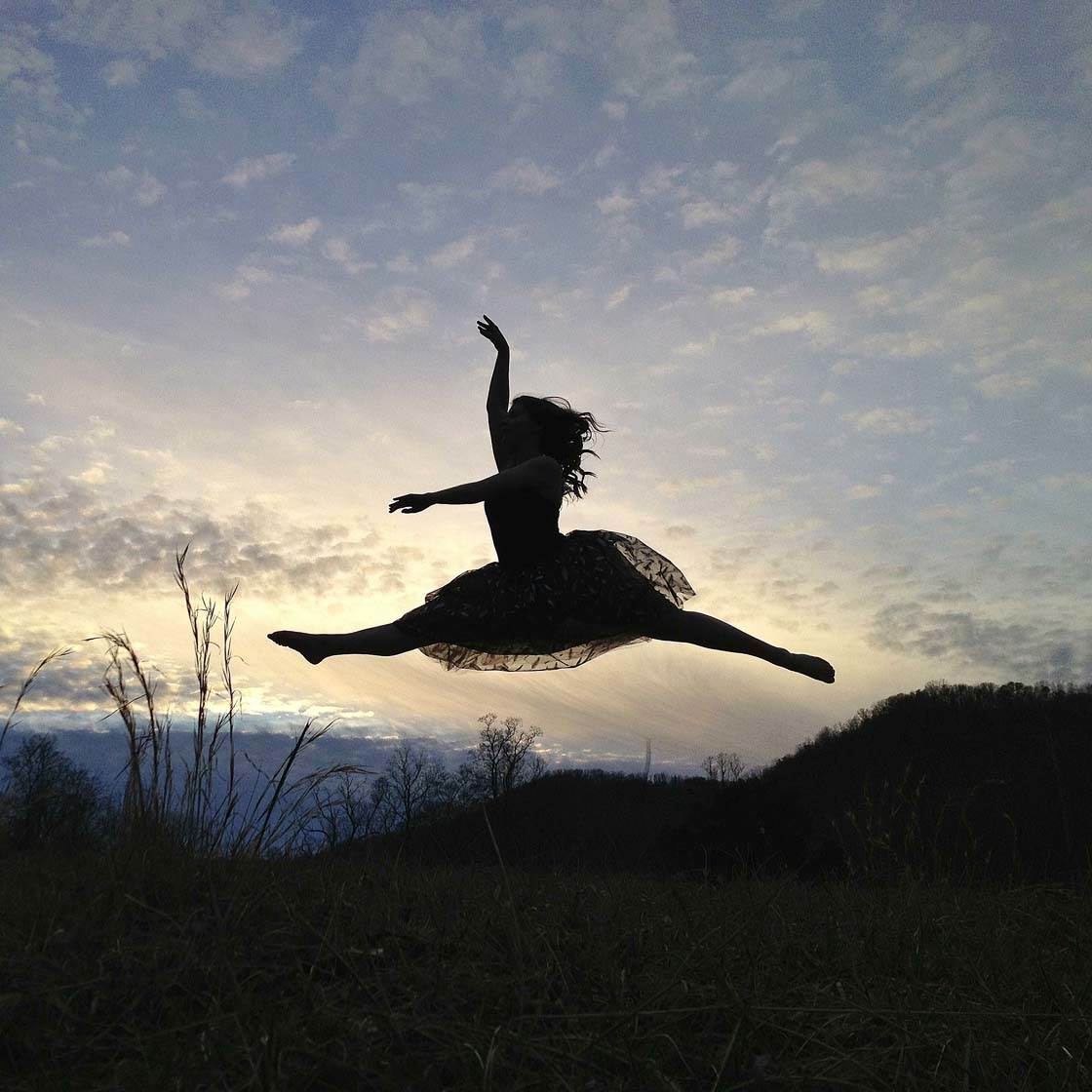
To create a silhouette photo, simply position your subject directly in front of the sun or a bright area of the sky. Tap to set focus where you want it, then swipe down on the screen to manually reduce the exposure (image brightness). The aim is to have your subject appear as a black shape against the brighter sky.
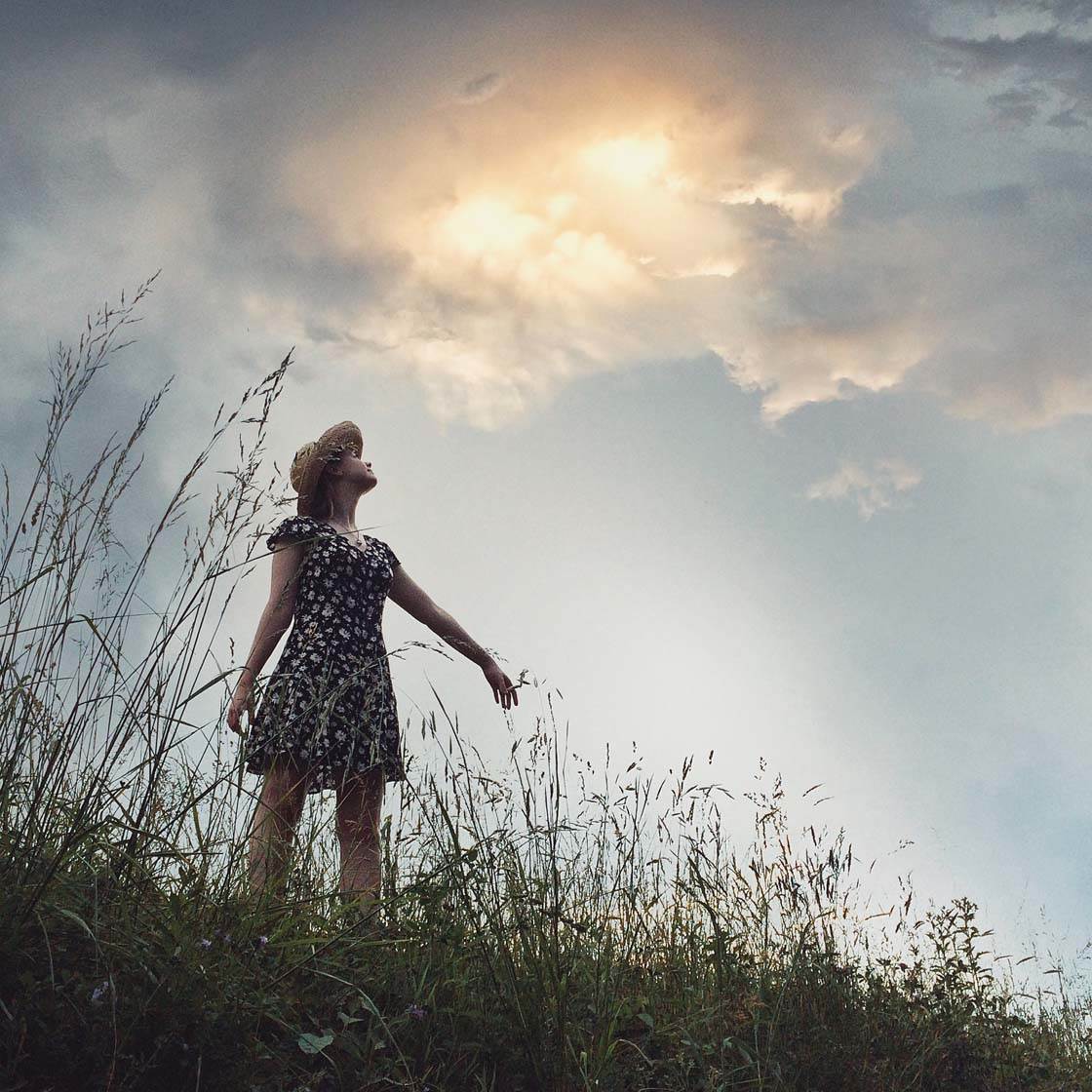
If you don’t want your subject to appear as a silhouette, you might need to increase exposure so that you can see detail in your subject. After setting focus, always manually adjust the exposure by swiping up or down on the screen until you achieve the brightness that you want.
3. Shoot From Above
Another approach to getting more interesting, but less distracting, backgrounds is to shoot your subject from above so that the ground becomes the backdrop for your photo.
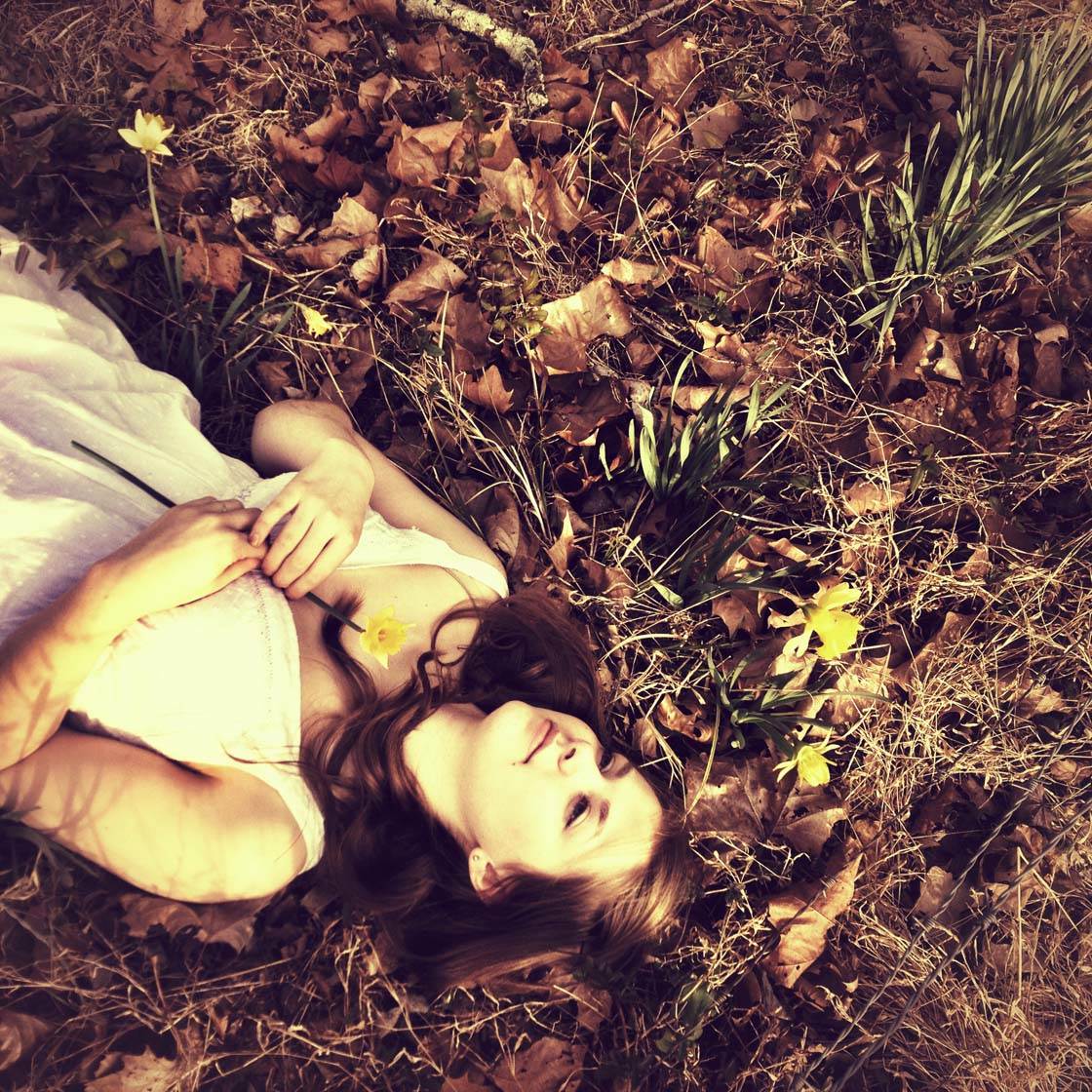
Instead of taking a portrait from straight on or from a low angle, try to find an area of elevation and take your portrait photo from above.
One fun and easy way to do this is to have the subject lay down by your feet and take the photo looking straight down on them.
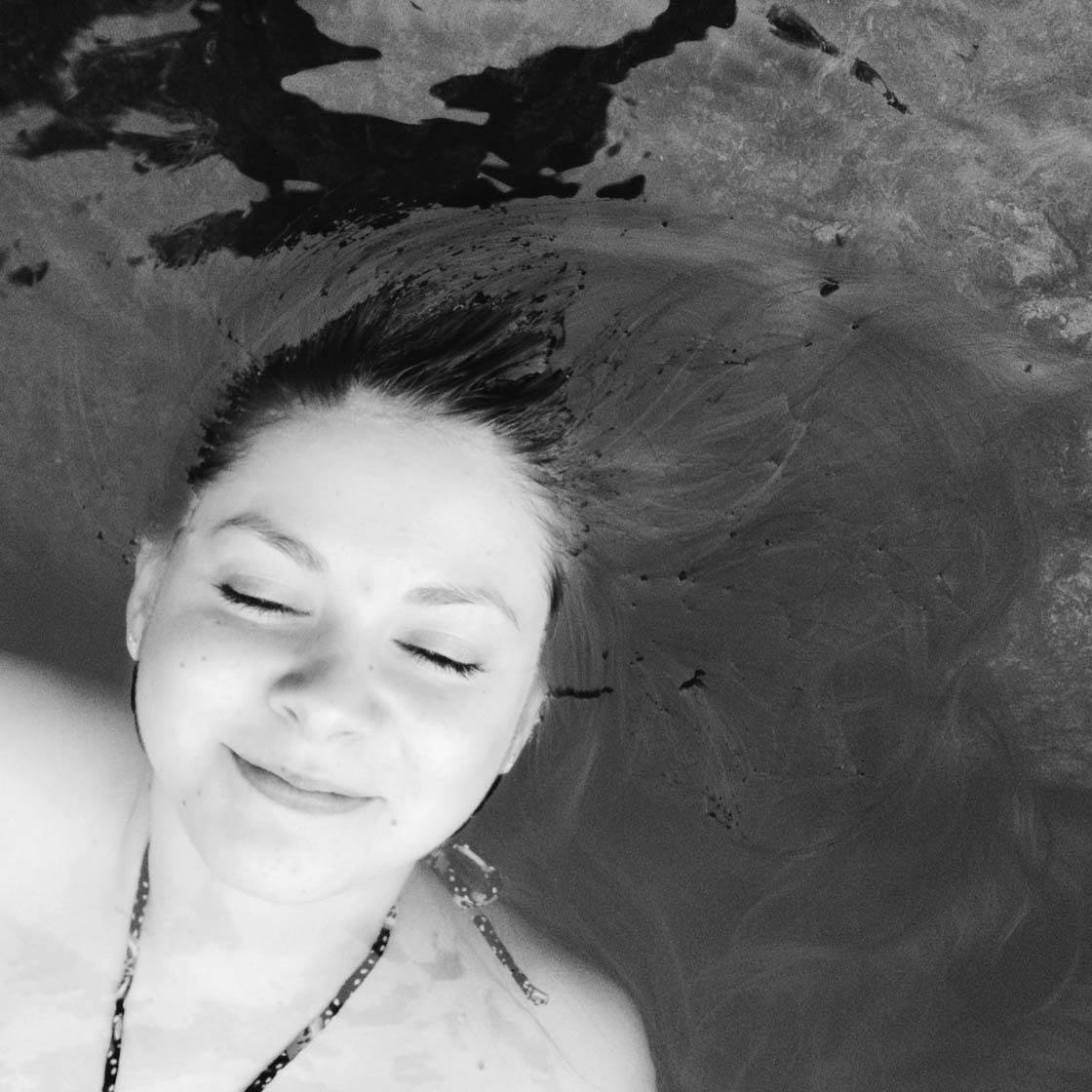
Using water instead of the ground can be really effective too. Jut make sure you don’t drop your phone in the water!

You could also try finding a high vantage point such as the top of a staircase, a balcony or a bridge. This will allow you to shoot straight down onto a subject far below you while using the ground as your backdrop.
4. Think About Color
When shooting portraits, pay attention to the color of your background. Normally you want your subject to stand out against the background, and an easy way to do this is to ensure the color of your subject’s clothing contrasts with the color of the background.
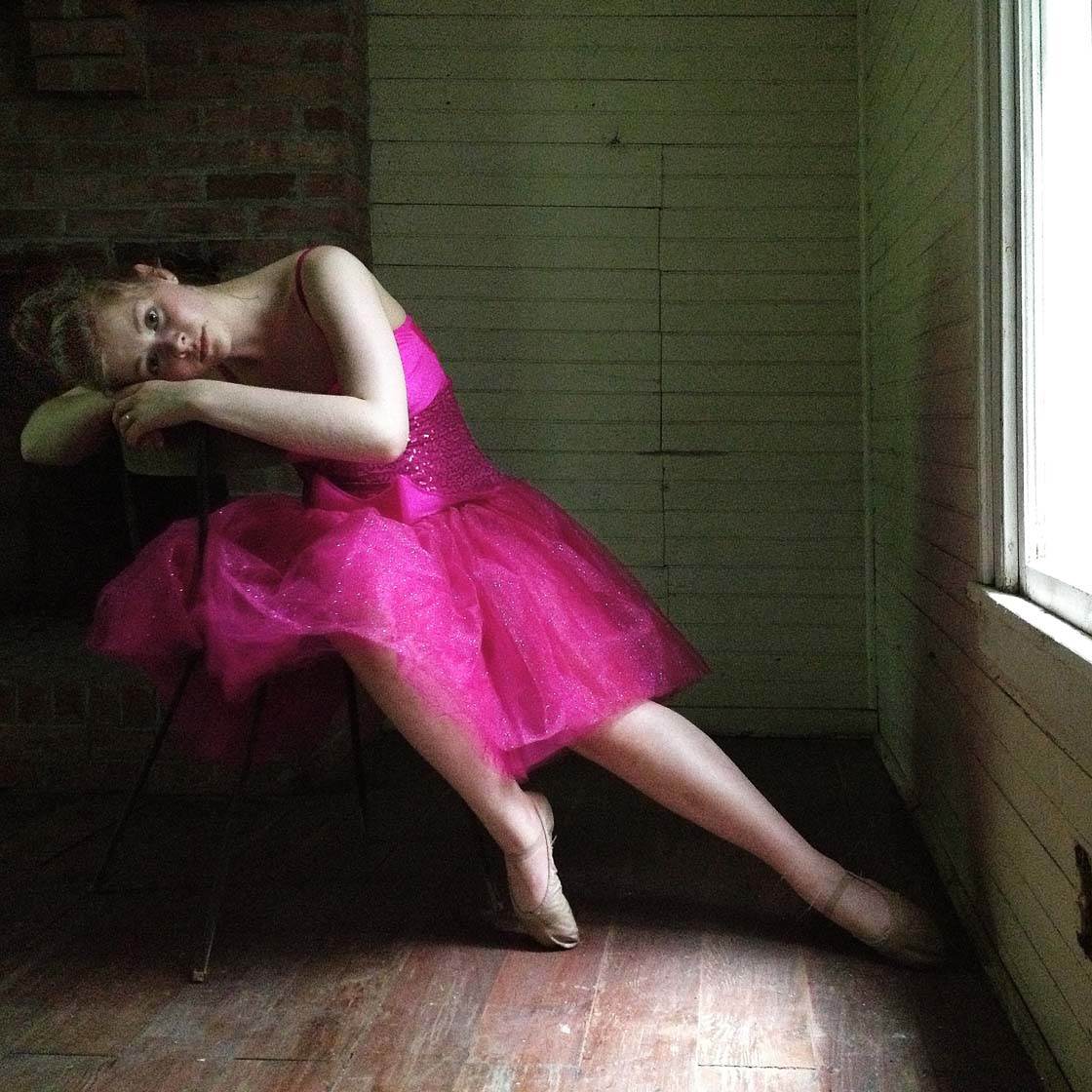
The bright pink dress of the subject above stands out really well against the dull, muted colors of the wall in the background. If she was wearing a dress of more muted tones, she wouldn’t stand out so well against that background.
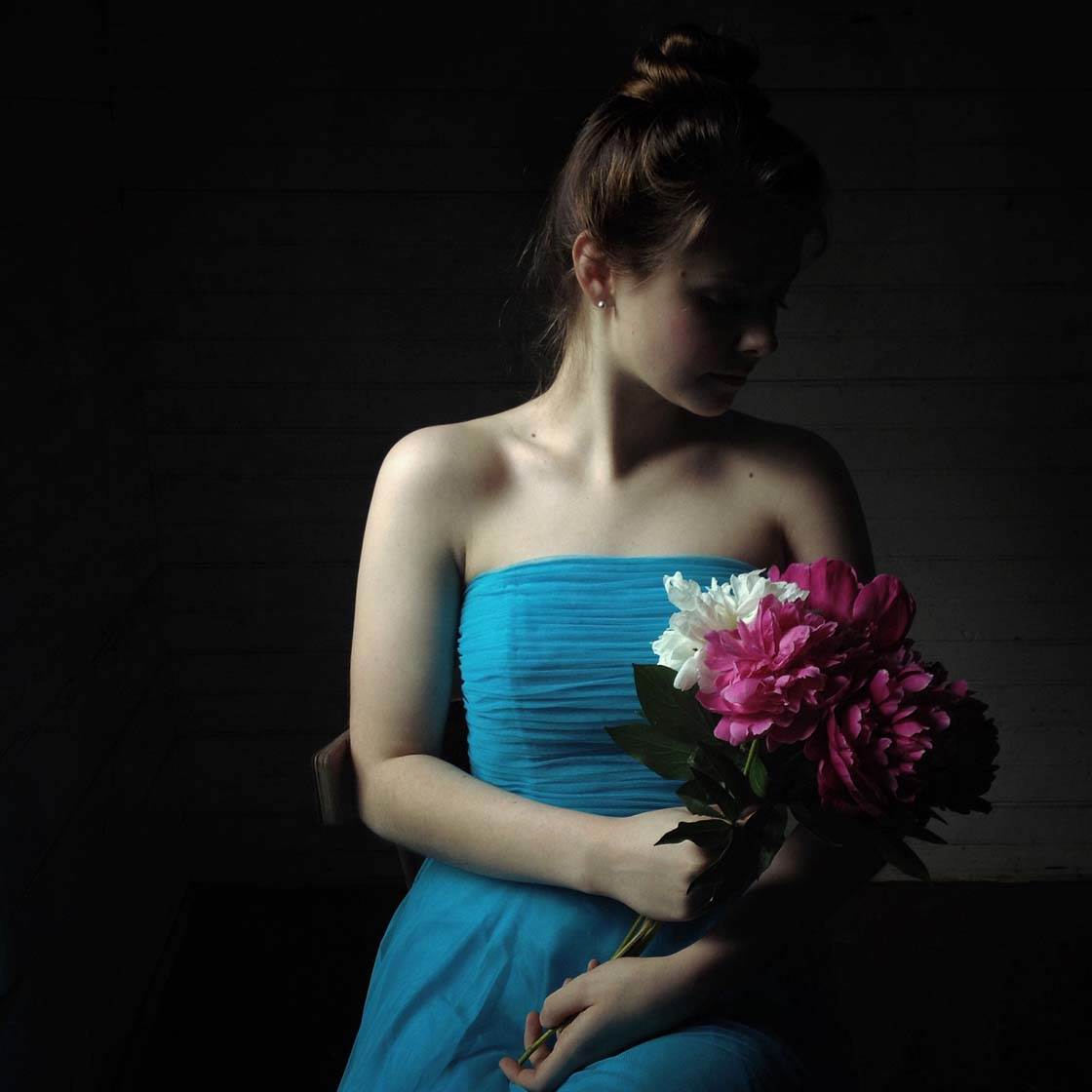
Generally, if your background is dark, your subject will stand out best if they’re wearing light or bright colored clothing. If the background is light, darker clothing will work better.
If you’re shooting portraits out in nature, the background will often be green, so think about what colored clothing will stand out best in these situations.

Black or dark clothing can work well against the colors of nature, but if you really want to make a statement, try having your subject wear something red. This will add a wonderful pop of color to your image, ensuring that your subject doesn’t get lost against the background.
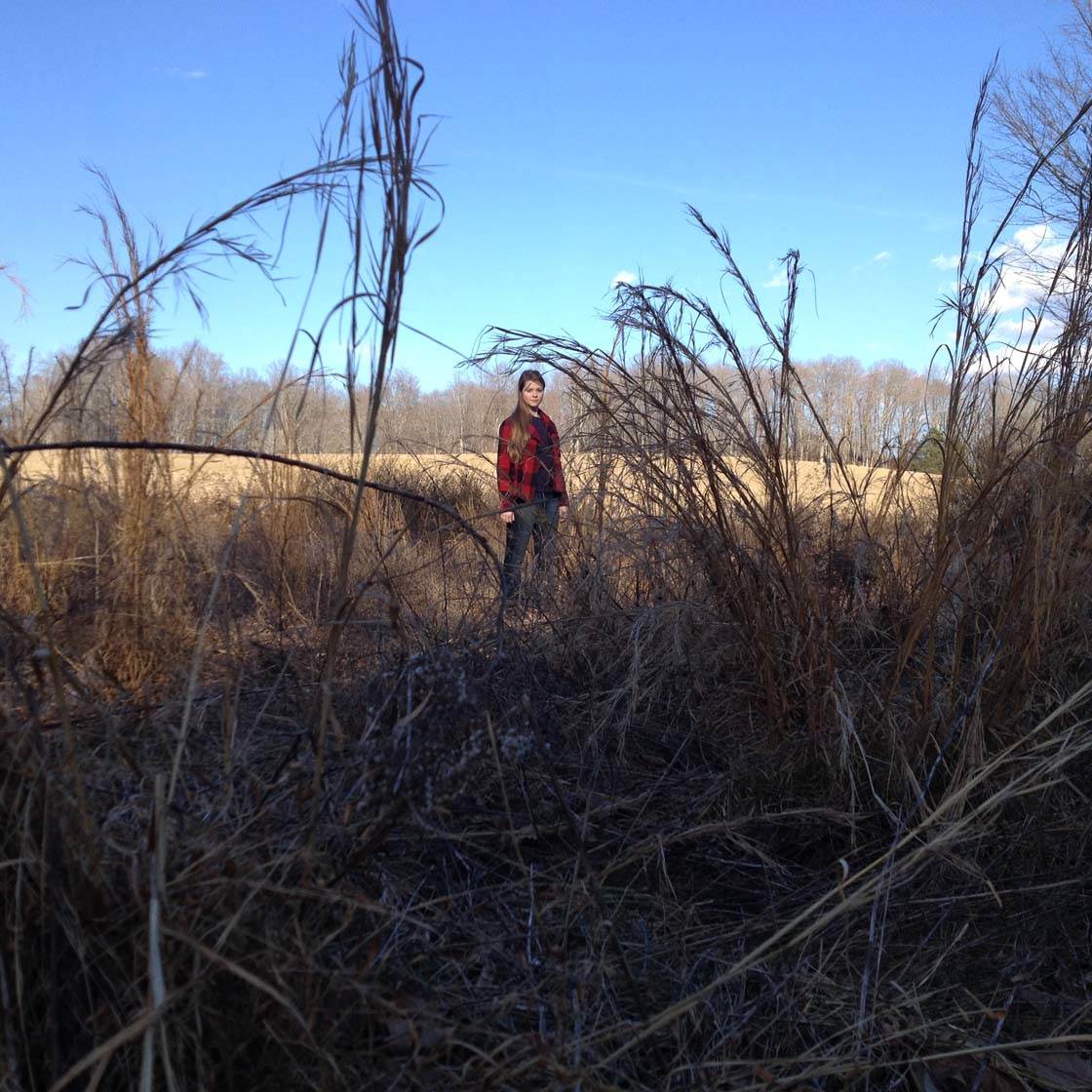
In urban environments, you could look out for vivid colored walls that will contrast with the color of your subject’s clothing.
For a completely different approach, try making your subject blend in with the color of the background. This creates a completely different effect where the subject appears almost camouflaged against the background.
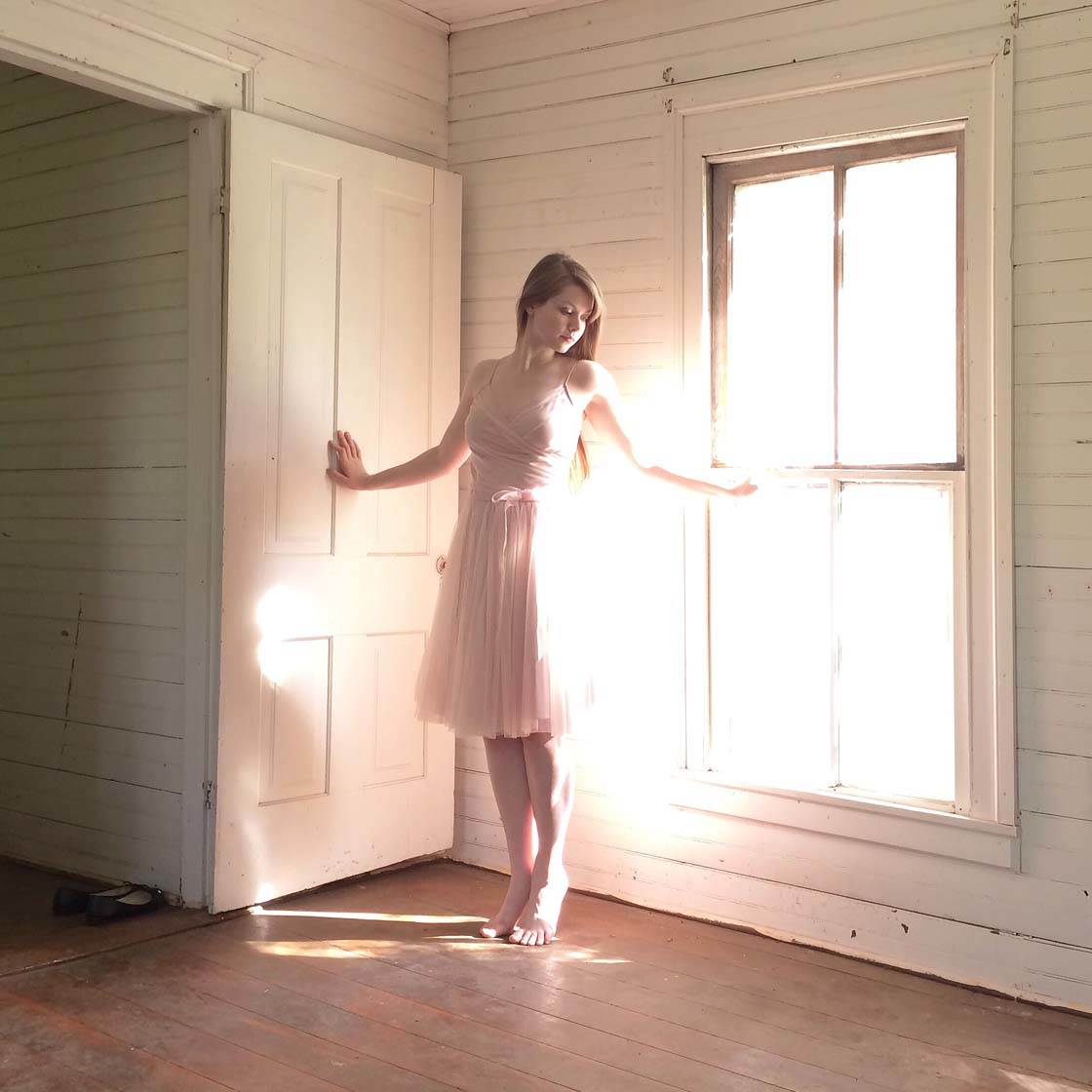
Simply choose a background that’s a similar color to the subject’s clothing. Or if you’re set on using a certain background for your portrait photo, ask the subject to wear clothing of a similar color.
5. Search Out Interesting Textures
Textured backgrounds are great for providing extra visual interest to your portrait photos without taking attention away from the main subject.
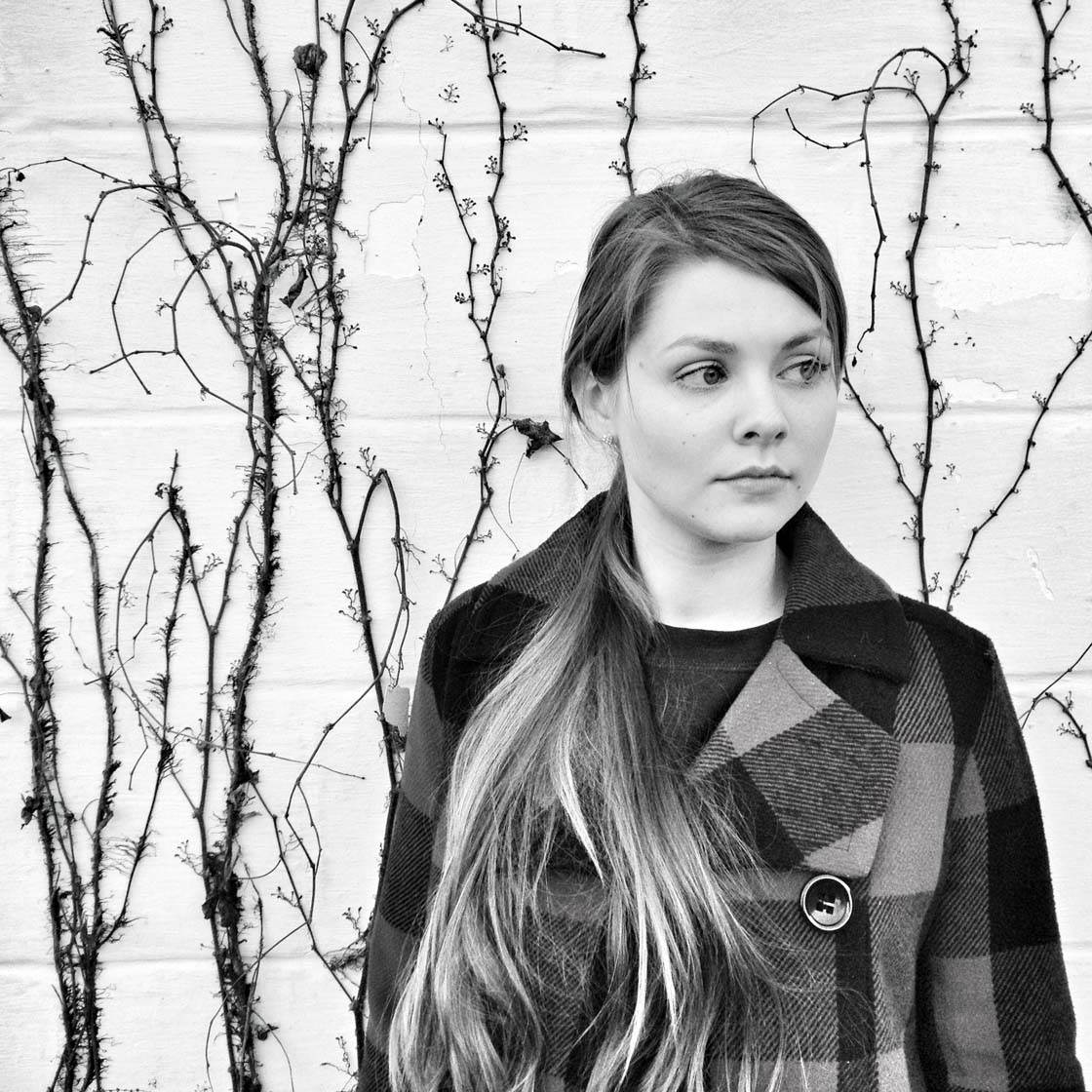
Interesting textures can be found in so many places. For example, old buildings with aged brick facades or wood siding, tall wooden fences, overgrown bushes and ivy-covered walls, old doors with peeling paint, tree trunks with textured bark, lush green grass, fallen leaves, hay bales, an antique quilt, etc.
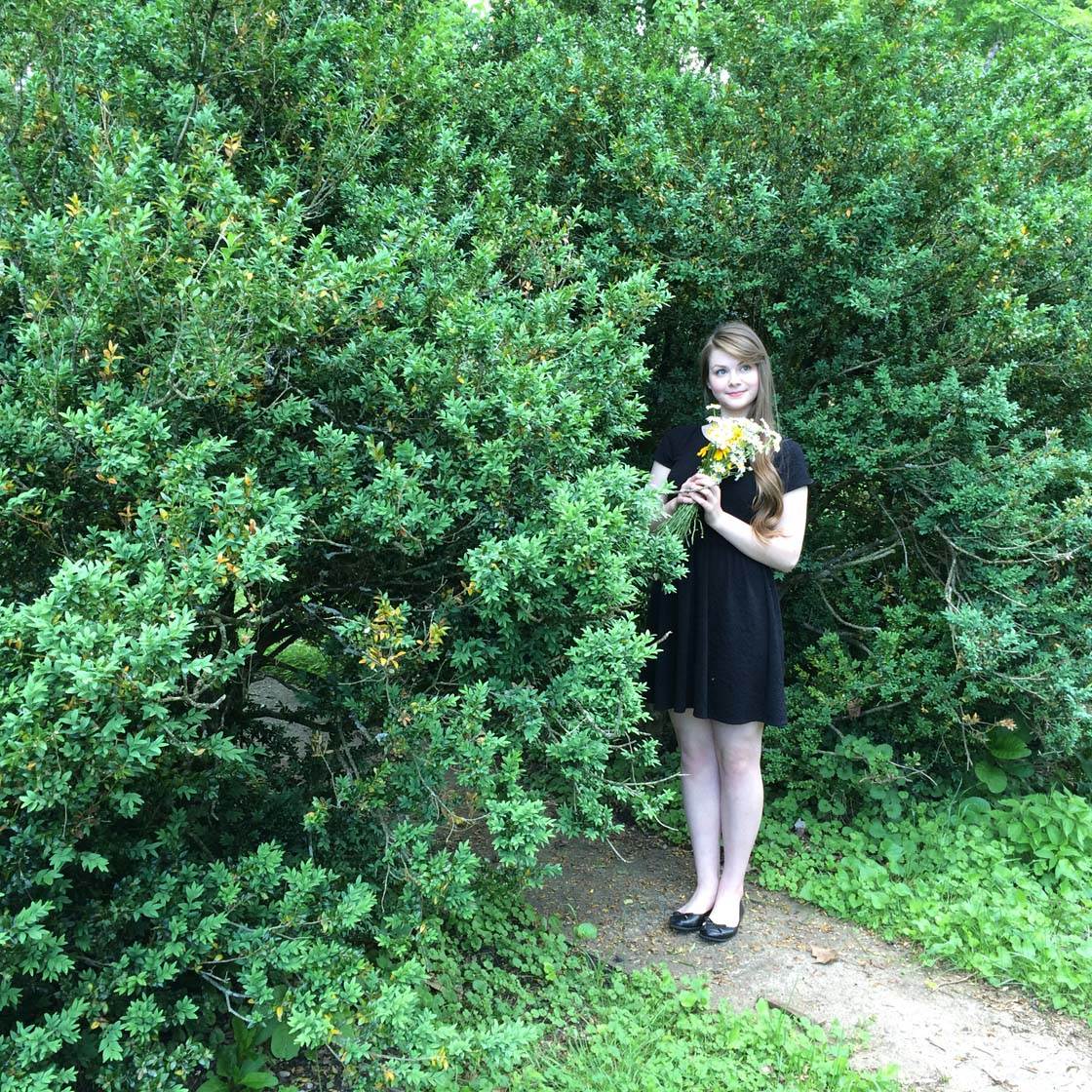
As well as making your photos more visually interesting, textured backgrounds add a tactile feel to your photos. They can make the viewer want to reach out and touch the texture, which ultimately makes your photo more engaging.
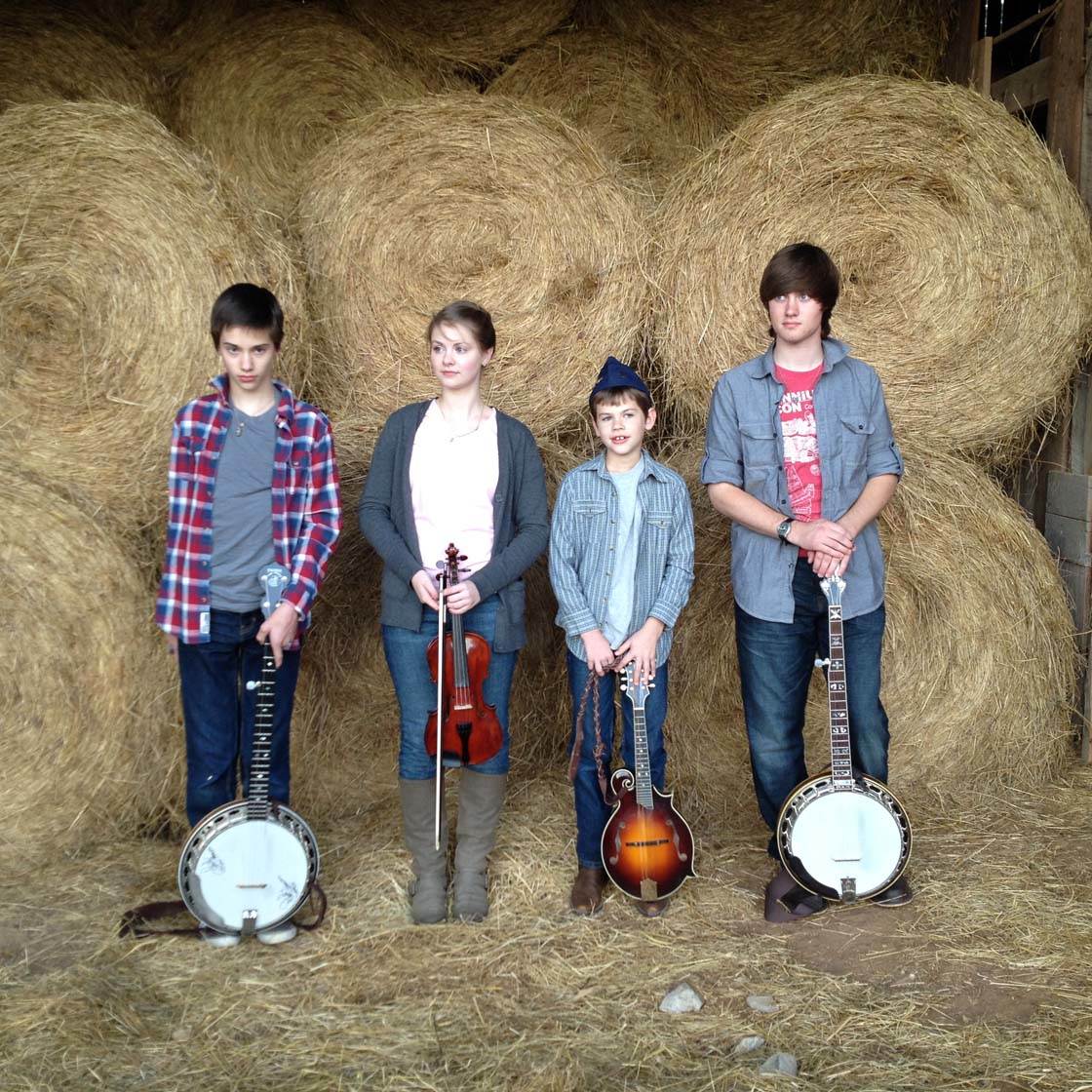
Including an interesting textured background also helps to place the subject in context with their surroundings. This adds more meaning to the photo, creating an extra storytelling element.
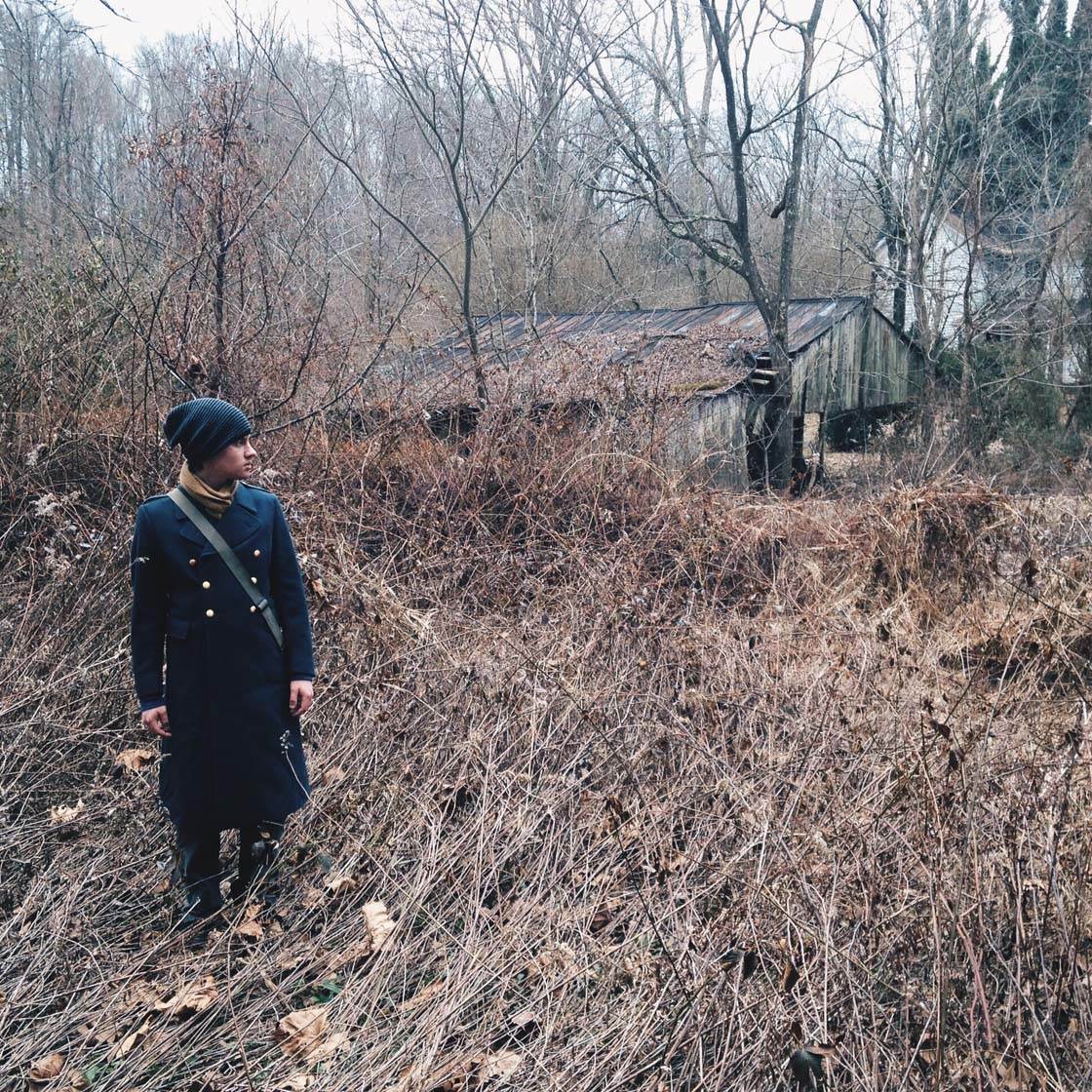
6. Look For Patterns
Patterns and lines add a sense of energy and movement to a static portrait. They also create wonderful visual interest that can add an abstract quality to your photos.
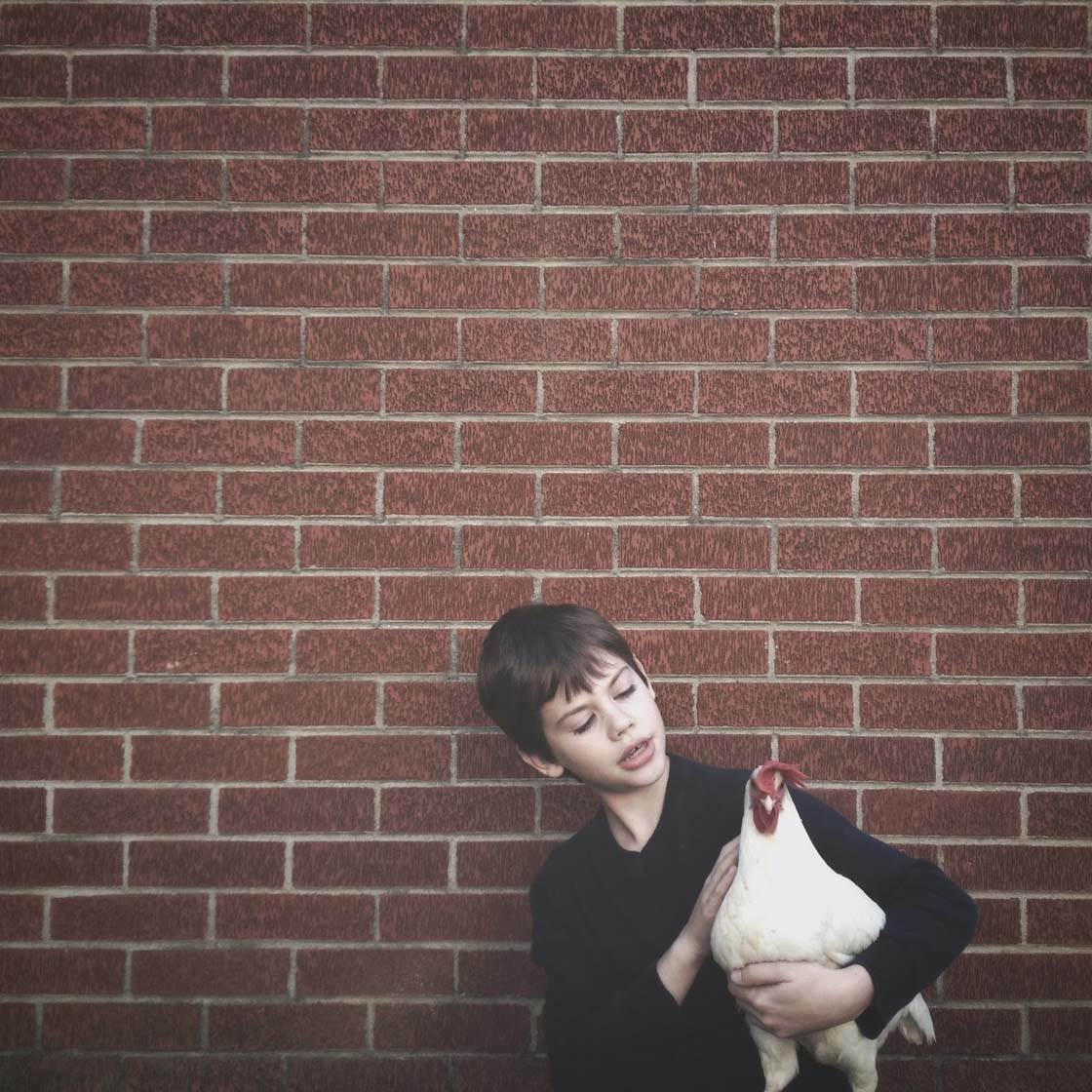
Once you start looking, you’ll find interesting patterns all around you. Brick walls, large wooden fences, patterned doors, venetian blinds, bamboo shades and woven curtains are all great starting points for finding patterns and lines.
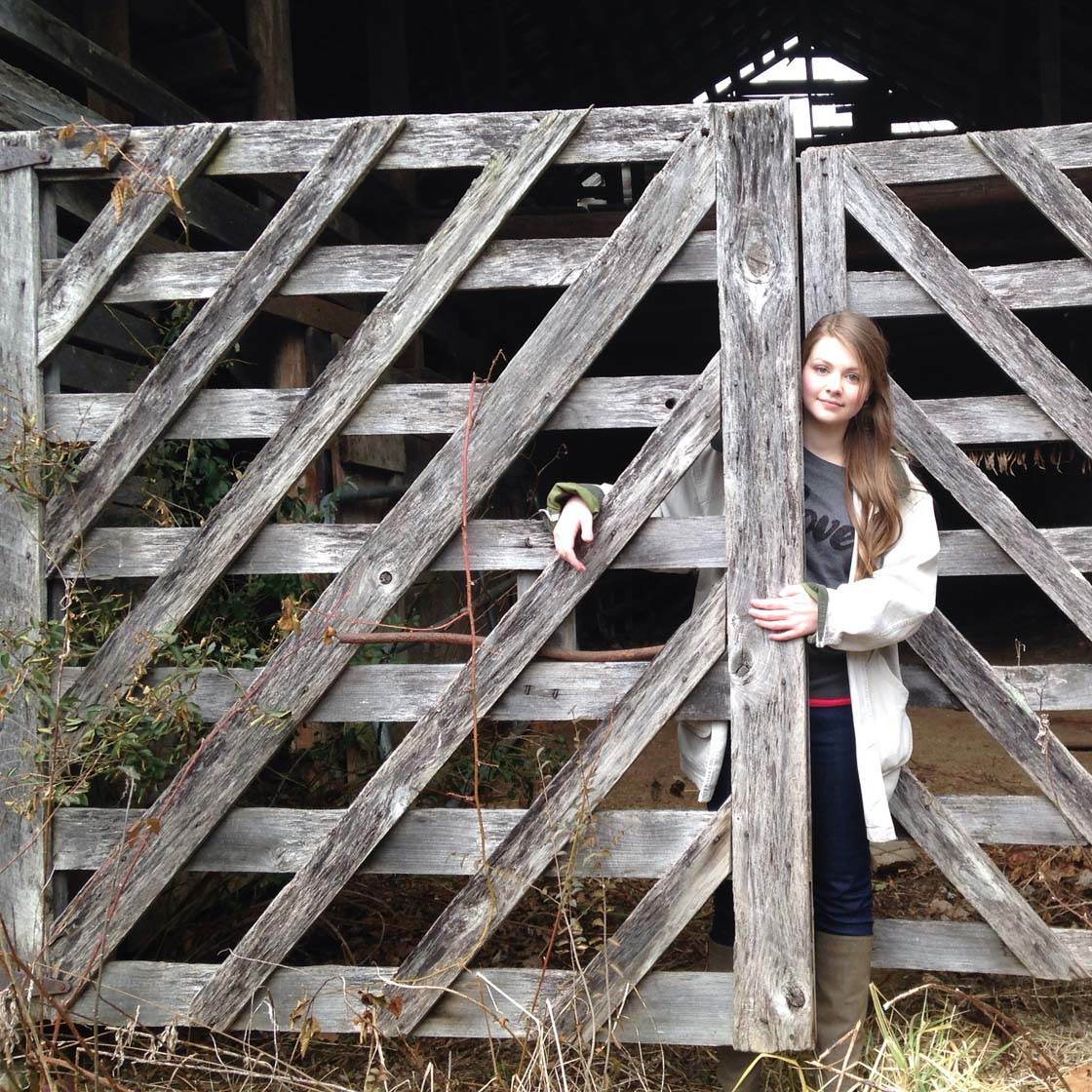
When you find a patterned background that you’d like to use, experiment with different compositions to make the most of the pattern.
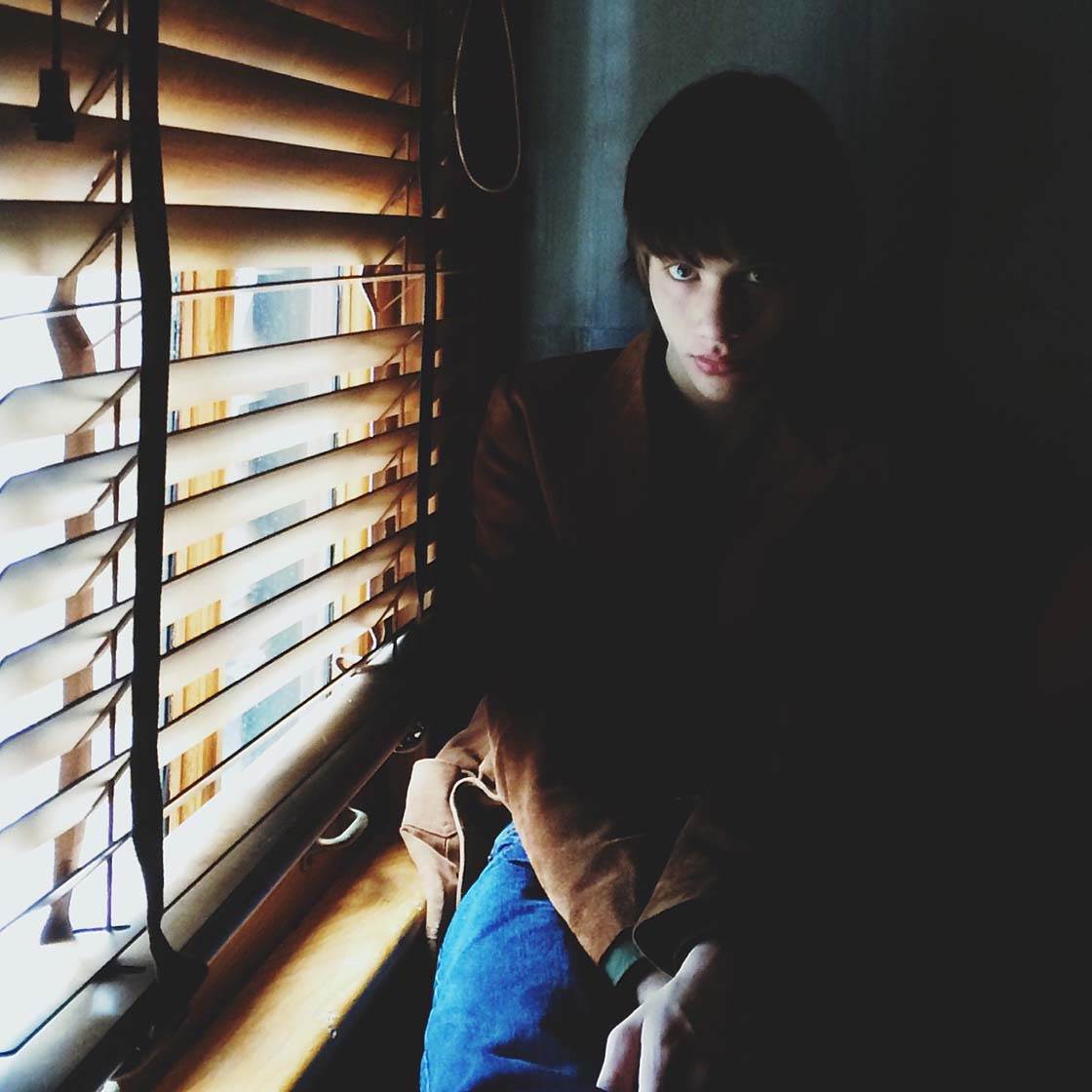
For example, I used the striped pattern of the blinds in this photo to help lead the eye from the front of the image to the back. Using patterns can help add another dimension to your portraits, creating more interesting and dynamic images.
7. Use Symmetry
Symmetry can be a really useful tool for getting your iPhone portrait photos noticed. Using symmetry in your portraits creates a strong sense of balance and makes them so much more appealing to the viewer.
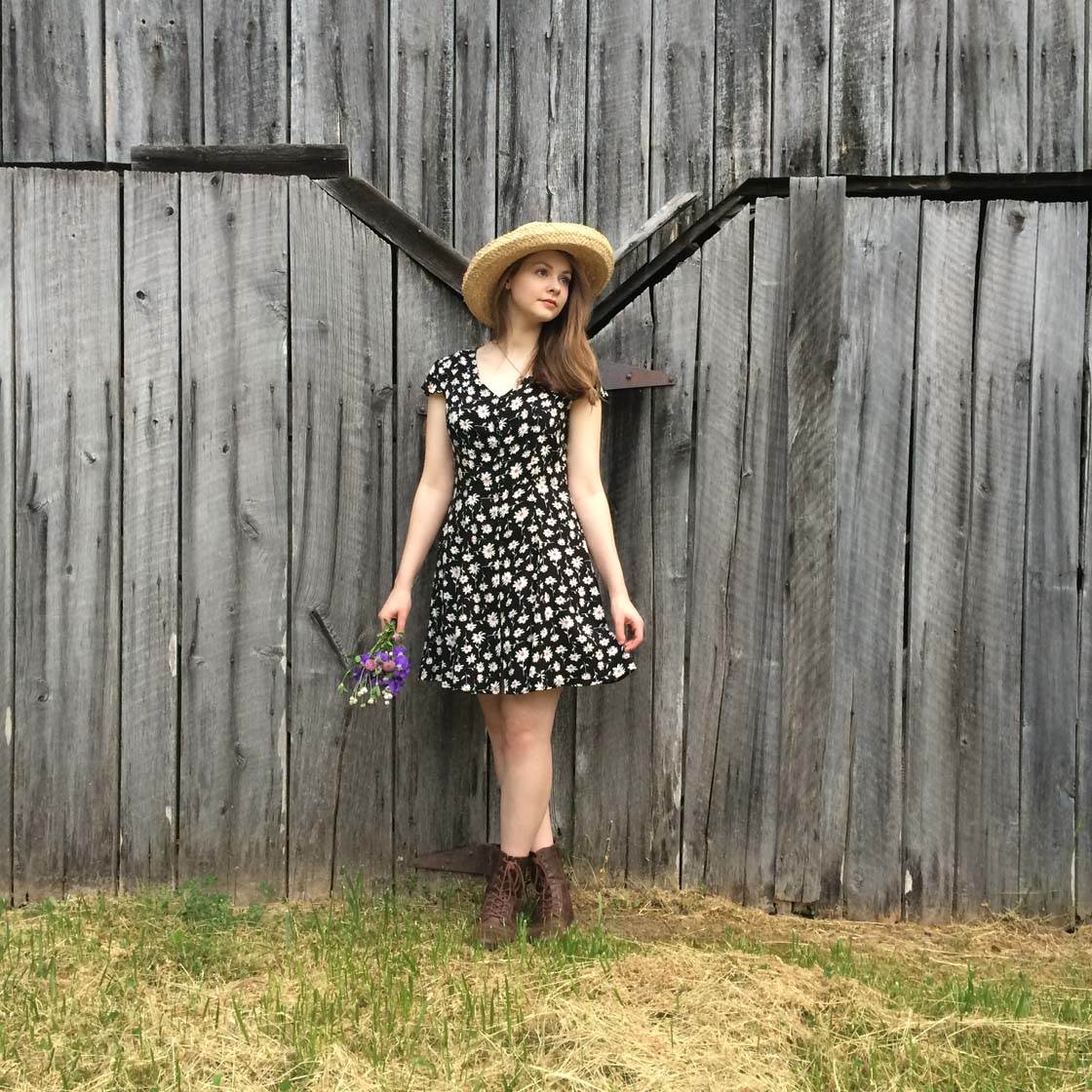
Symmetrical compositions are so strong that they’ll catch the viewer’s attention before they even look at the details of the photo.
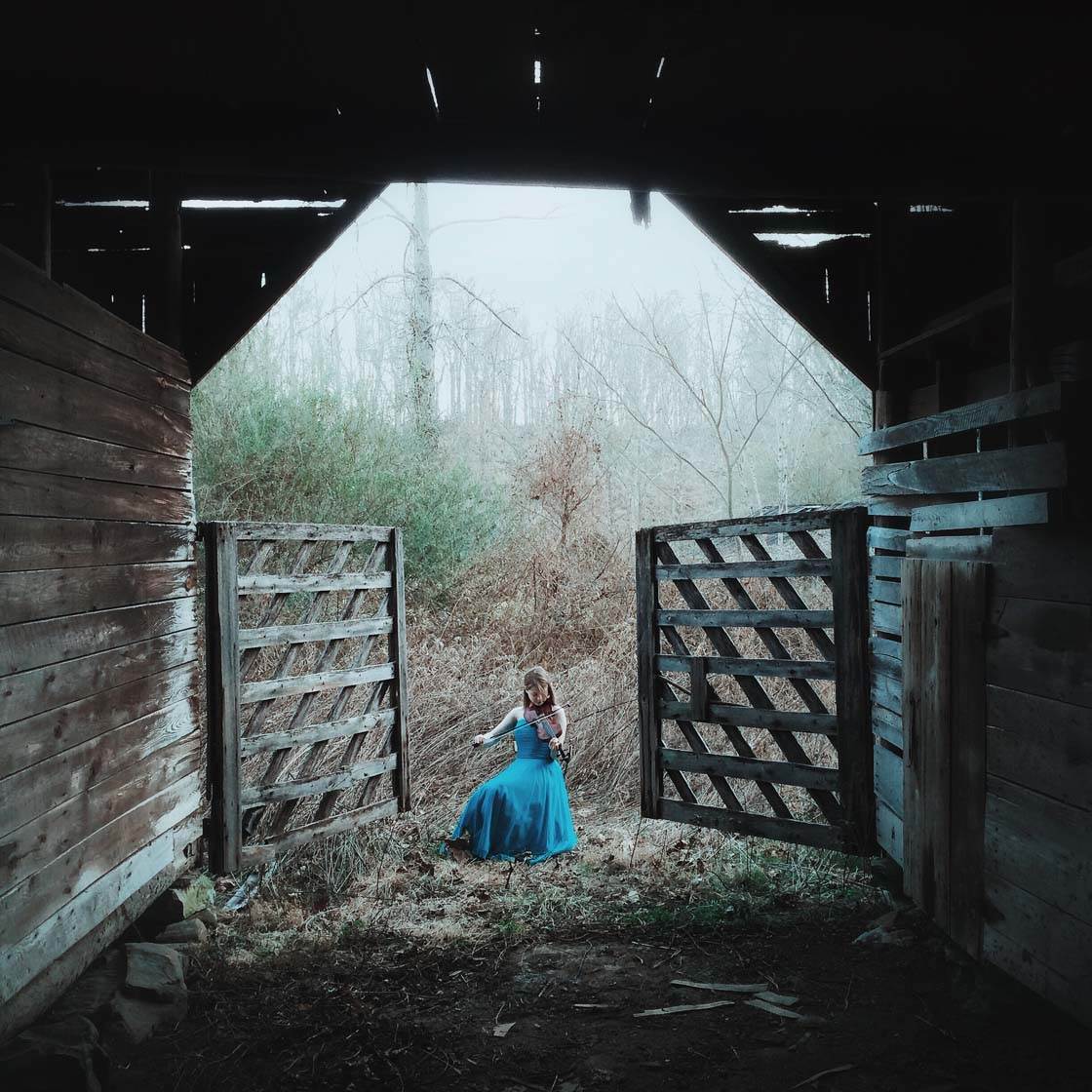
Symmetry can often be found in buildings, architecture and urban environments. Keep your eyes peeled for any background objects or structures that create a symmetrical mirror-image.
Bridges, building facades and archways are excellent places for finding perfect symmetry. But you’ll also find near-symmetry in nature, for example two trees of a similar shape and size on either side of a path.
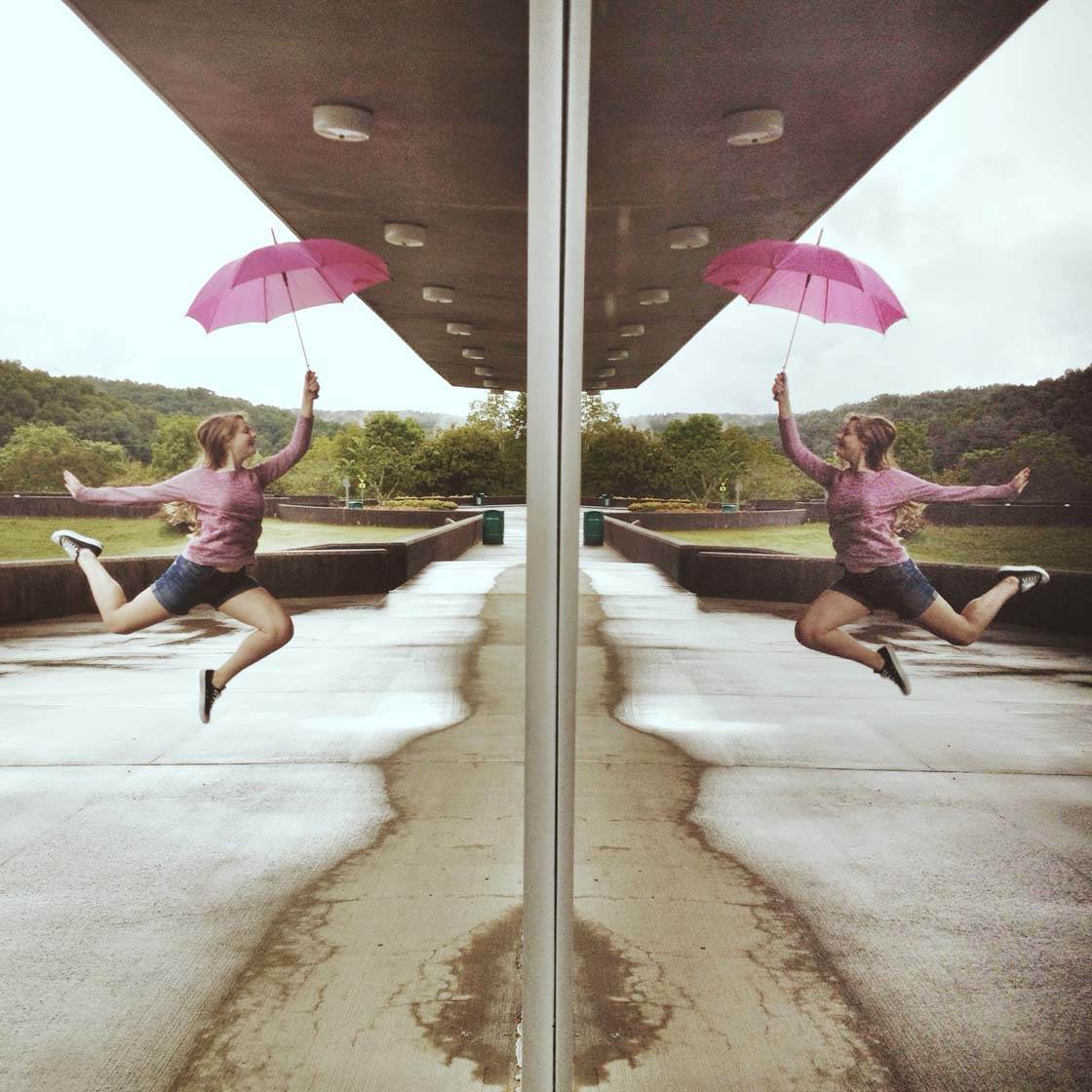
Another place to find symmetry is in shiny surfaces such as mirrors, glass and water. The reflections created can provide interesting symmetrical backgrounds for your portrait photos.

Composition is of utmost importance when capturing symmetry. Frame the shot with the line of symmetry is perfectly central, so that one side of the image mirrors the other. Placing your subject centrally in the frame will add to the sense of symmetry and create a stronger visual impact.
8. Look For Interesting Light
An important element in iPhone portraiture is utilizing the right kind of lighting. But don’t just think about how your subject is lit – look around and take notice of how the light interacts with the background.
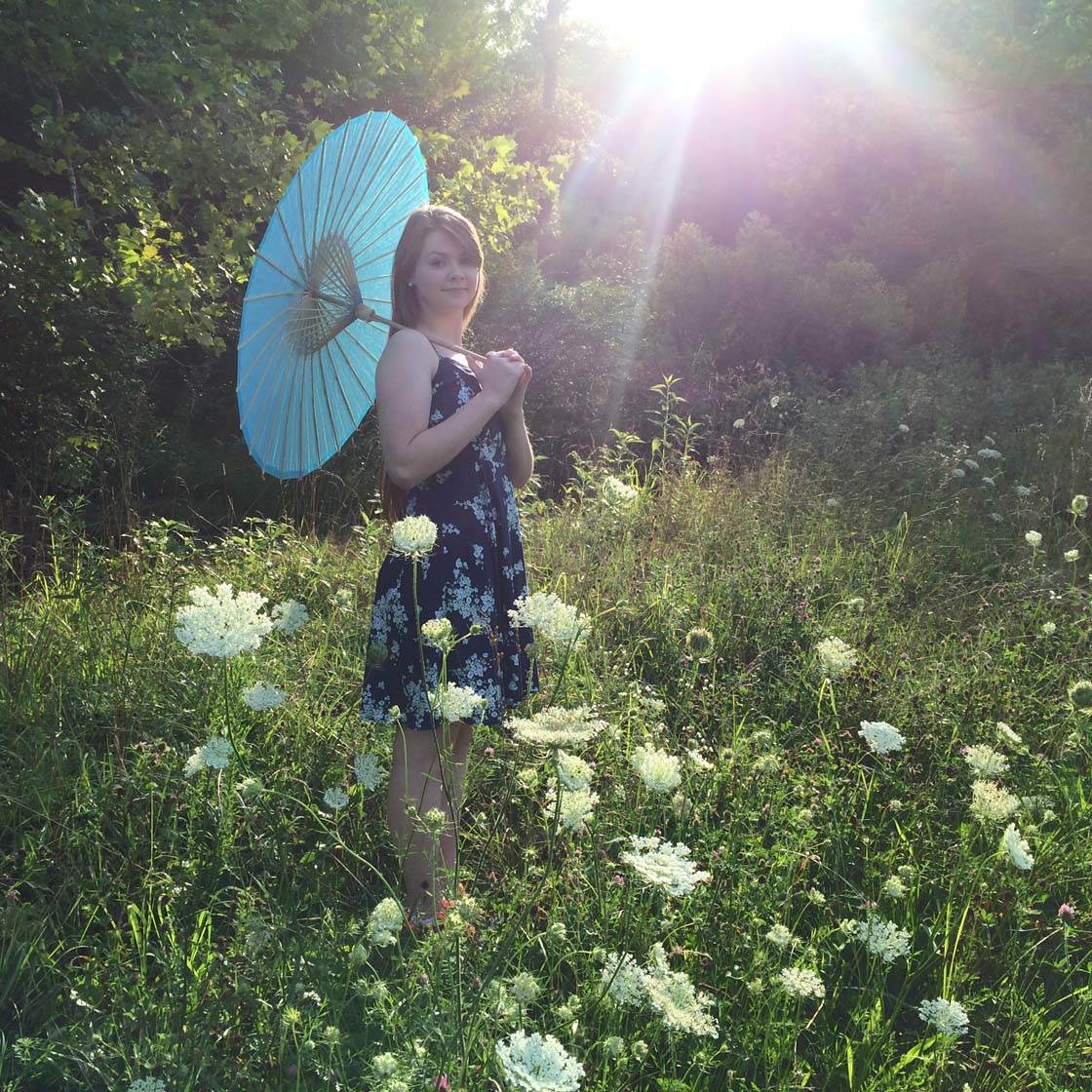
For example, there might be flares of light coming from the sun that you could use to add a magical element to the background.
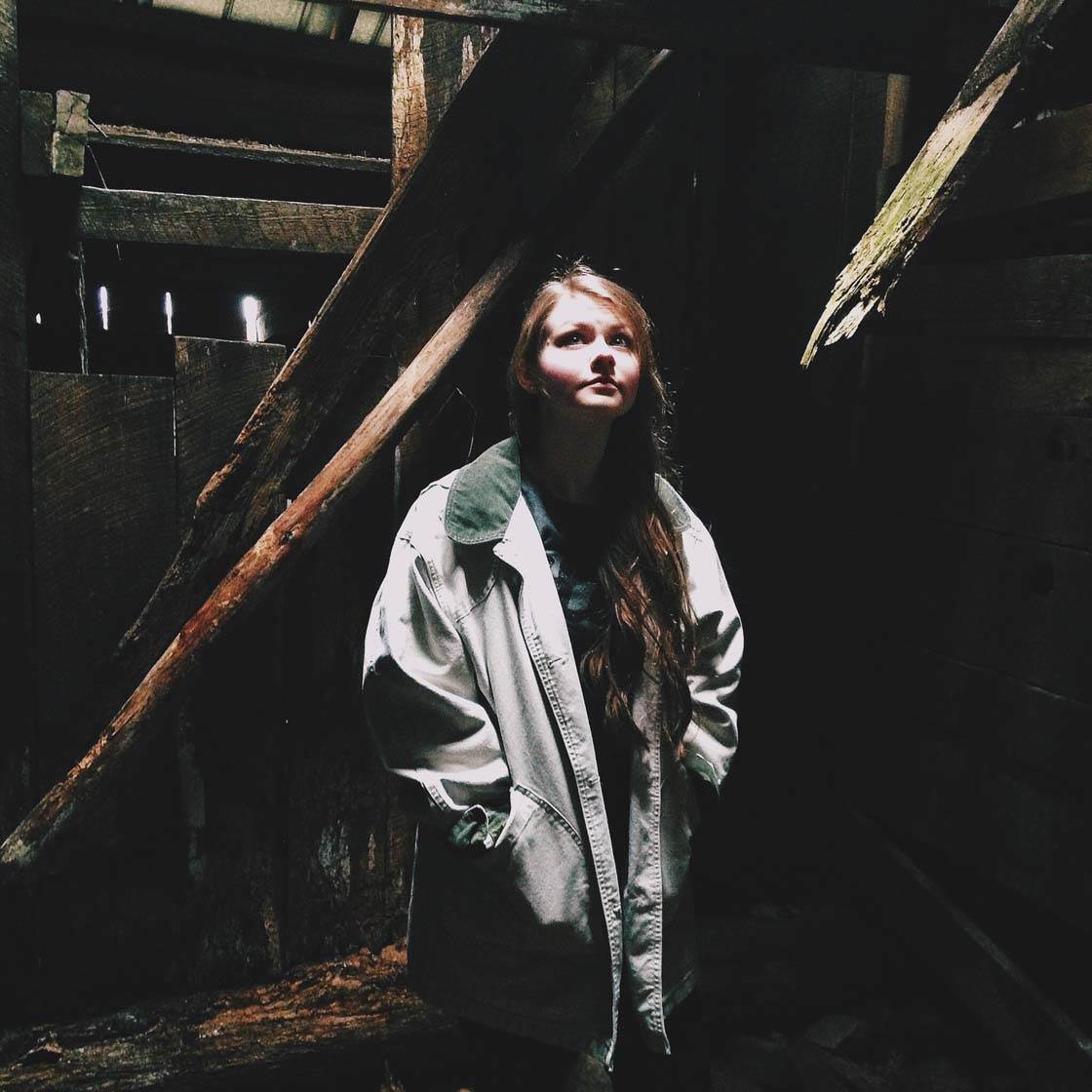
Look out for shafts of sunlight hitting objects behind your subject, patterns of dappled light, shadows being cast, etc. All of these elements can add extra visual interest that will enhance the background behind your subject.
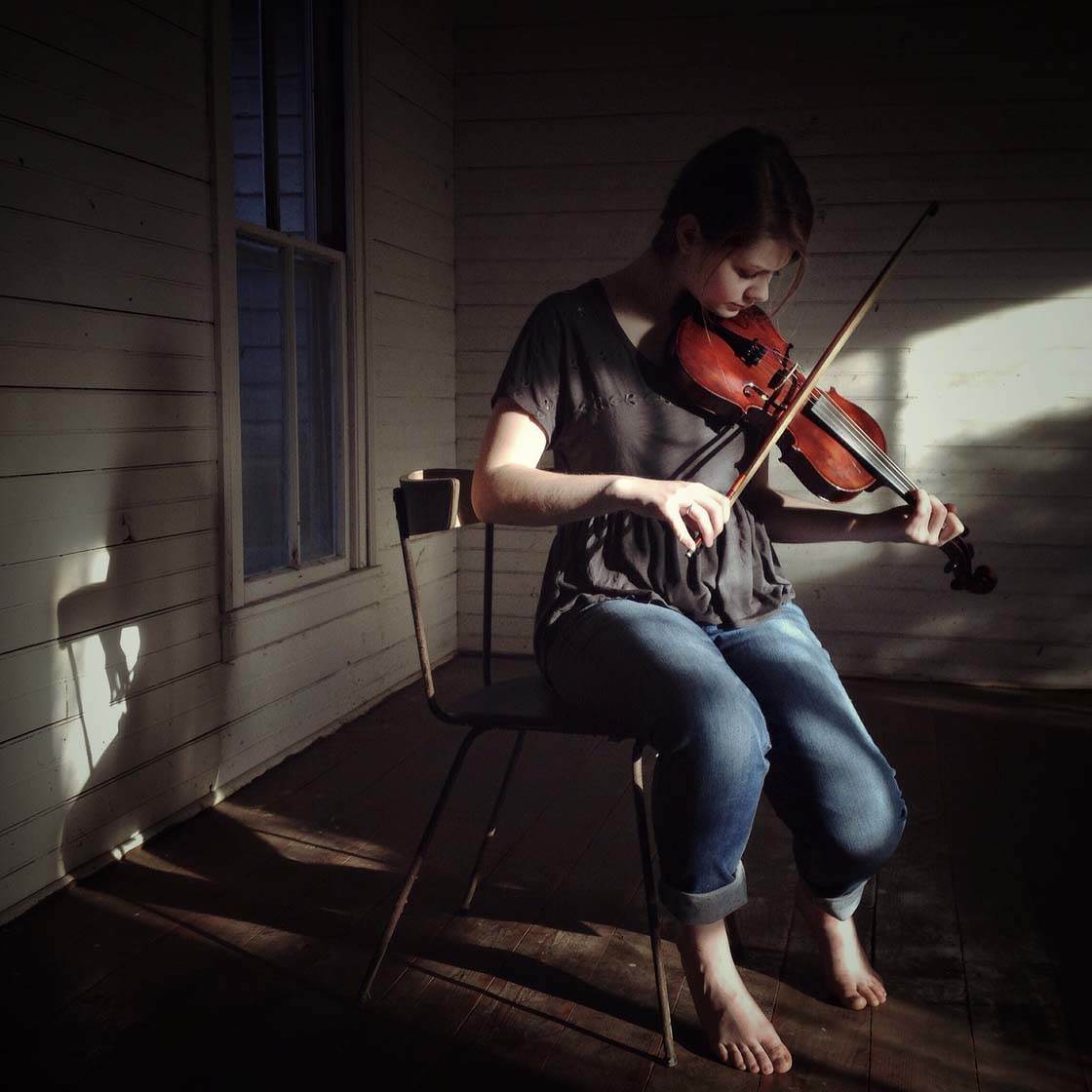
You’ll often find shadows in bright sunlight. You can use shadows of the person or other objects in the scene to create visual interest on the background behind them.

When shooting indoors, look for places where natural light is coming in through the windows. Notice how the light hits the walls in different ways, creating areas of light and shade. These places often create really interesting backgrounds for your indoor portrait photos.
9. Use Windows & Doorways
Interesting doorways and windows often create great backgrounds for your portrait photos, and they can be used in a couple of really useful ways.
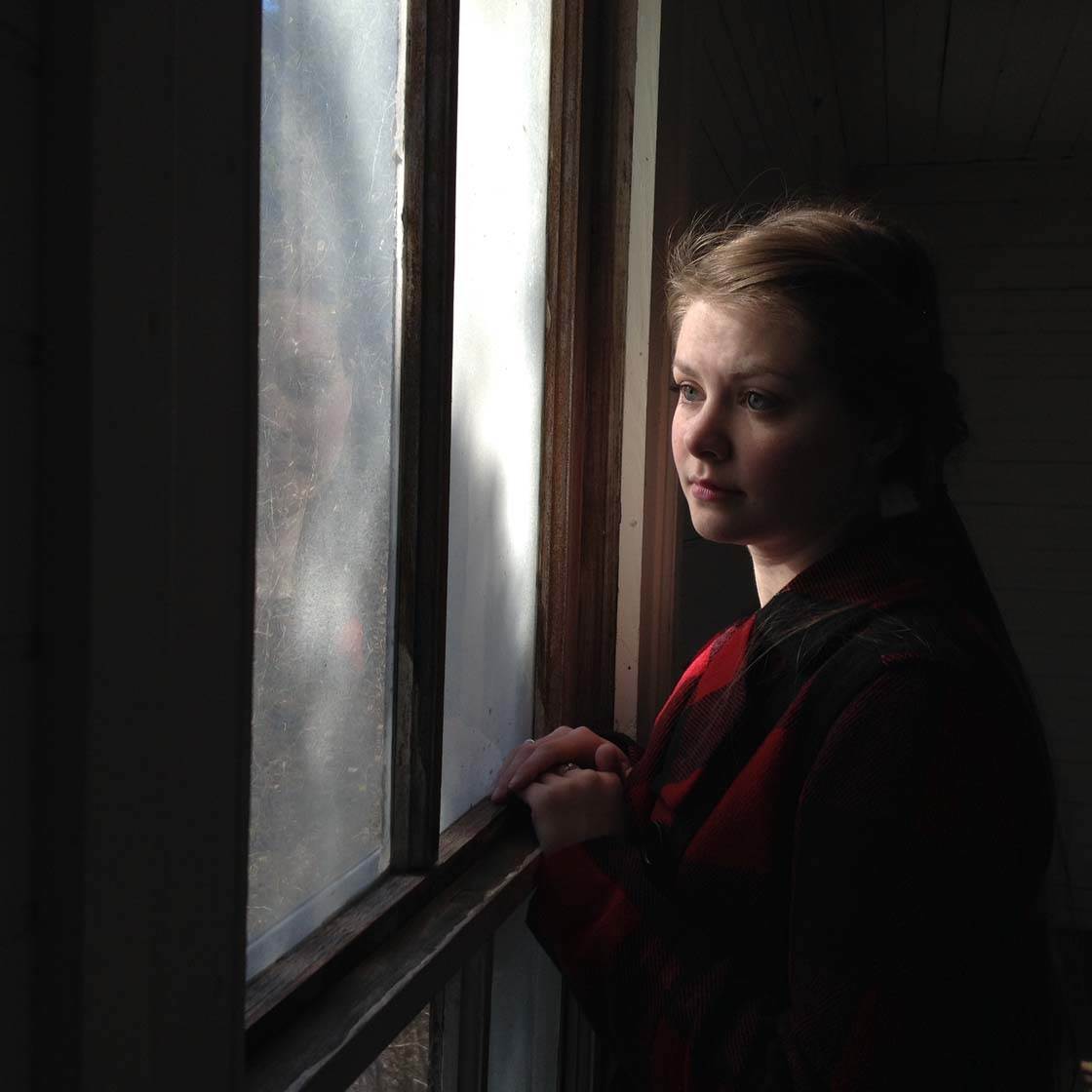
Positioning your subject next to a window will create wonderful lighting that will illuminate their features in interesting ways.
It will create areas of light and shade in your photo, and you can use this to hide one side of your subject in the shadows. This can create a wonderful sense of mystery and intrigue in your portrait photos.
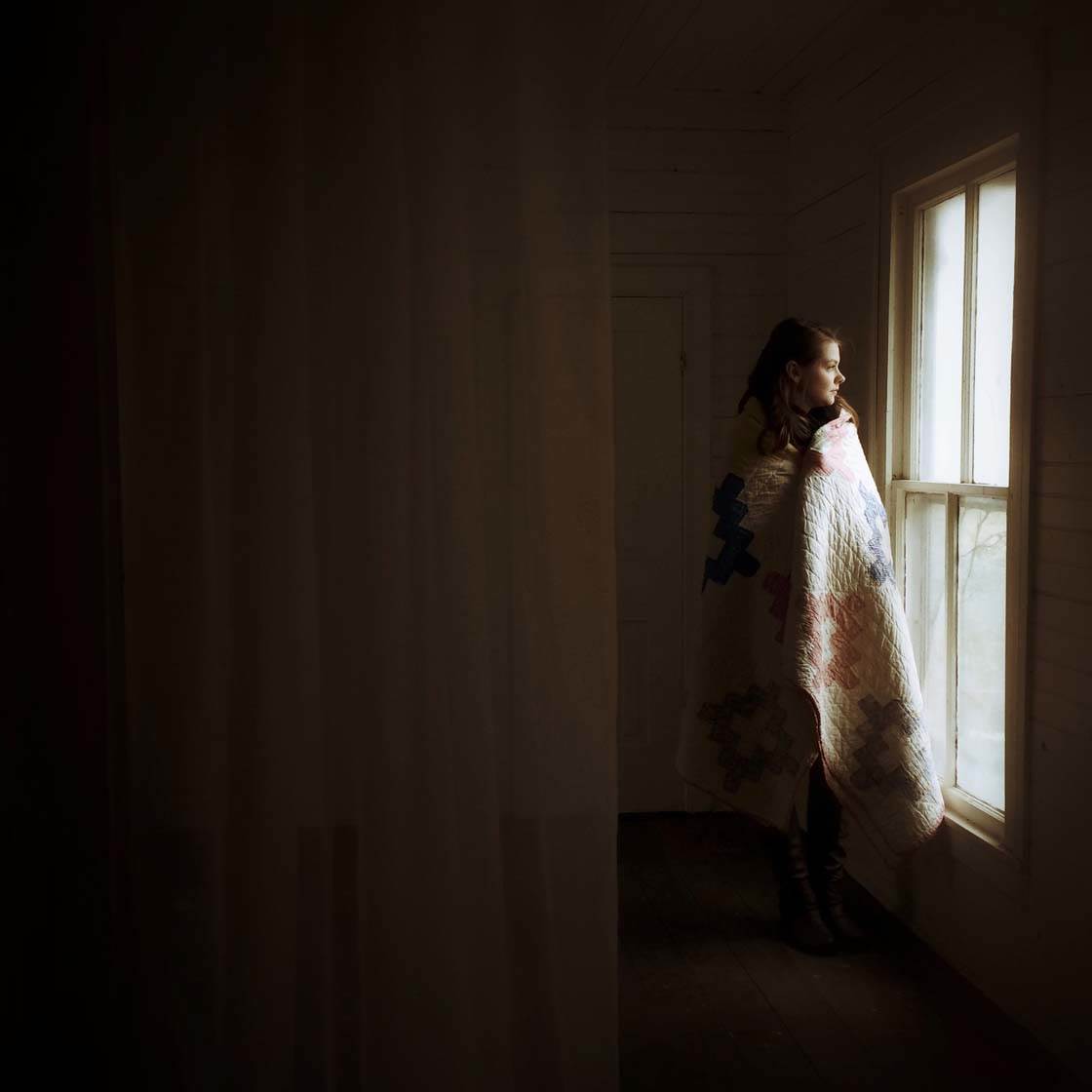
By varying the direction that you shoot from, you’ll be able to control how much of your subject is well-lit and how much appears in the shadows.
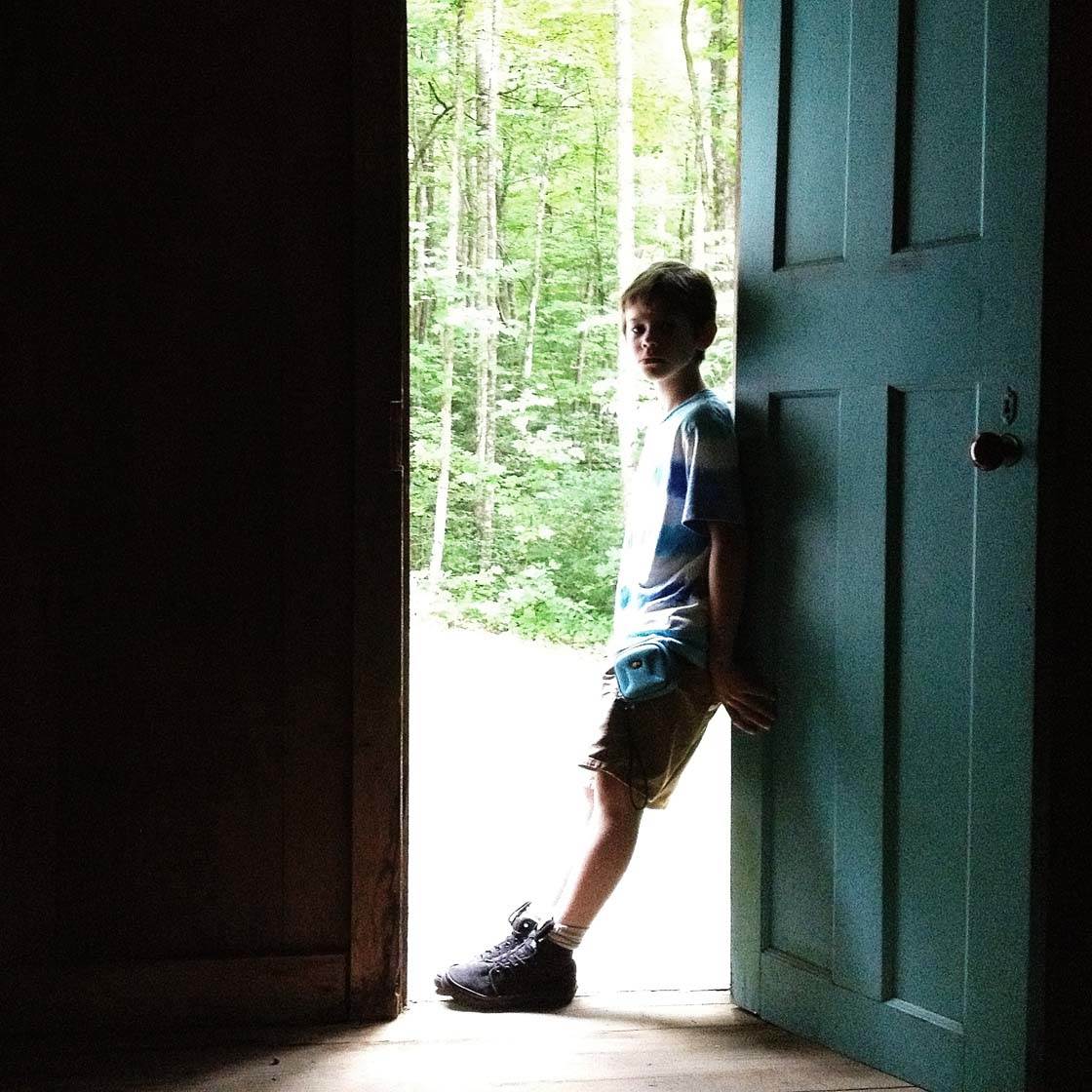
The other way you can use doors and windows is to position your subject within the aperture. Framing your subject in this way is a great way of drawing more attention to them.
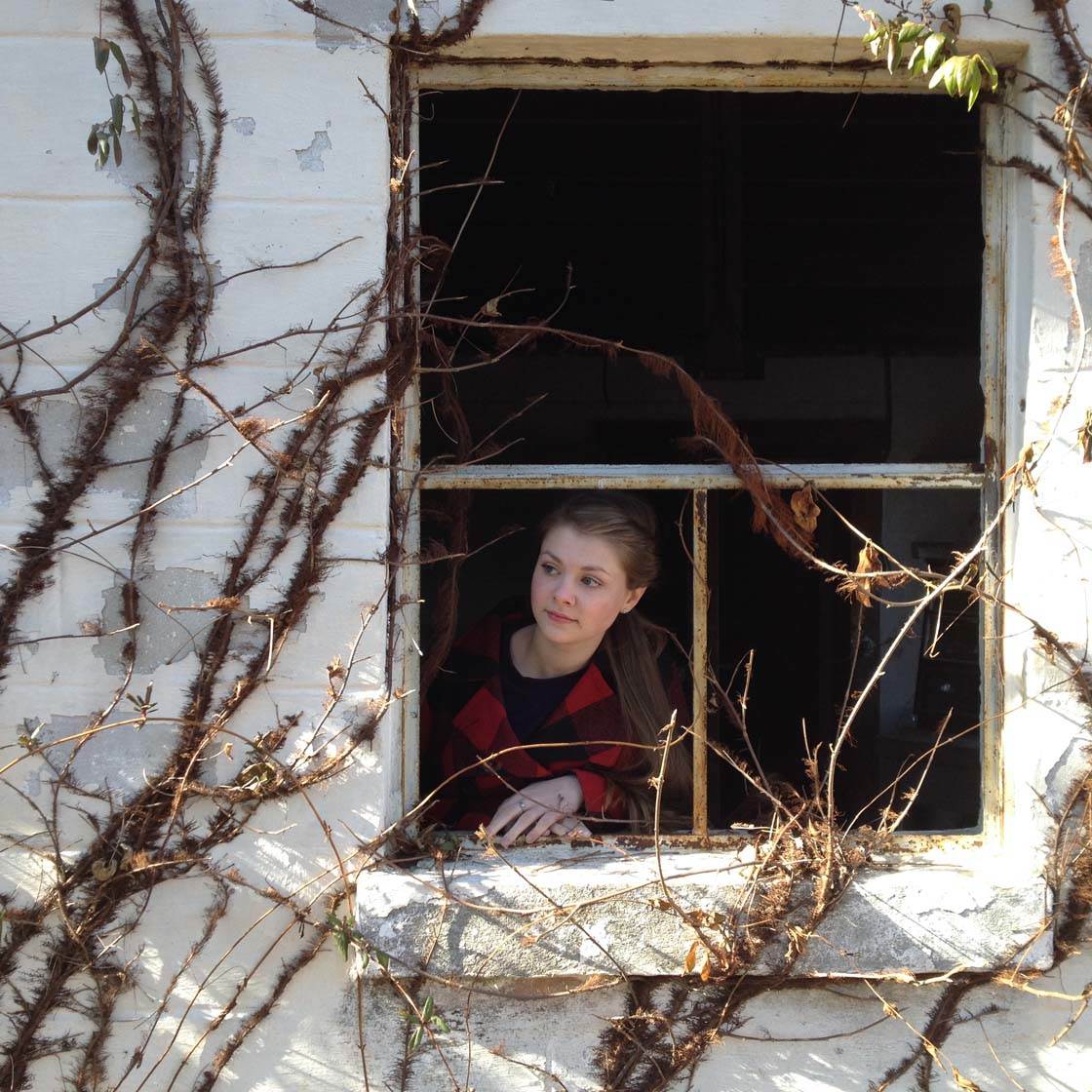
You could position your subject in front of the frame, just inside the frame, or even peeking out from a doorway or window.
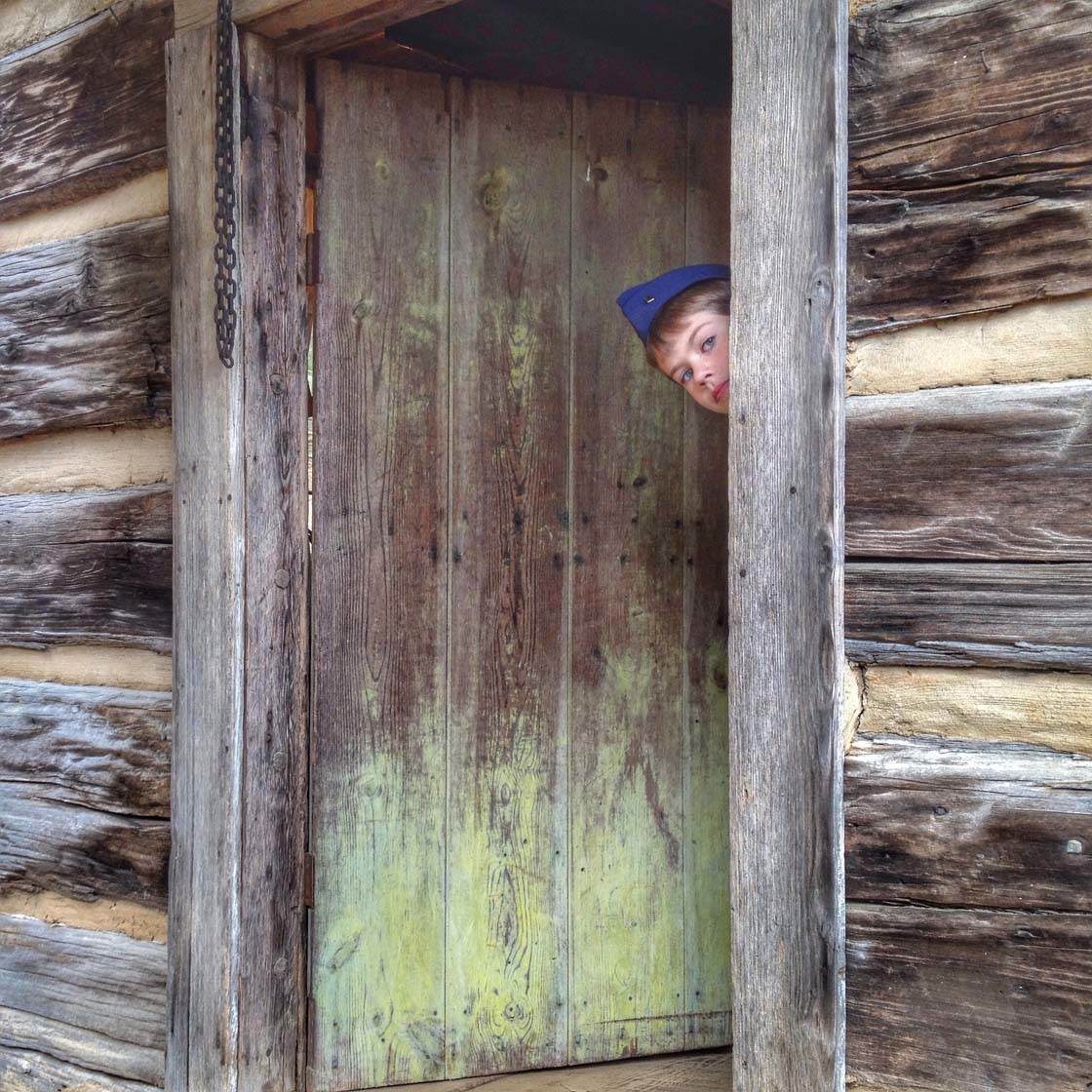
10. Reflect Your Backgrounds
A really interesting way to make your portrait backgrounds more interesting is to use reflections. Whenever you see a reflective surface such as water, glass or a mirror, check to see if there are any reflections that would make a good backdrop for a portrait photo.
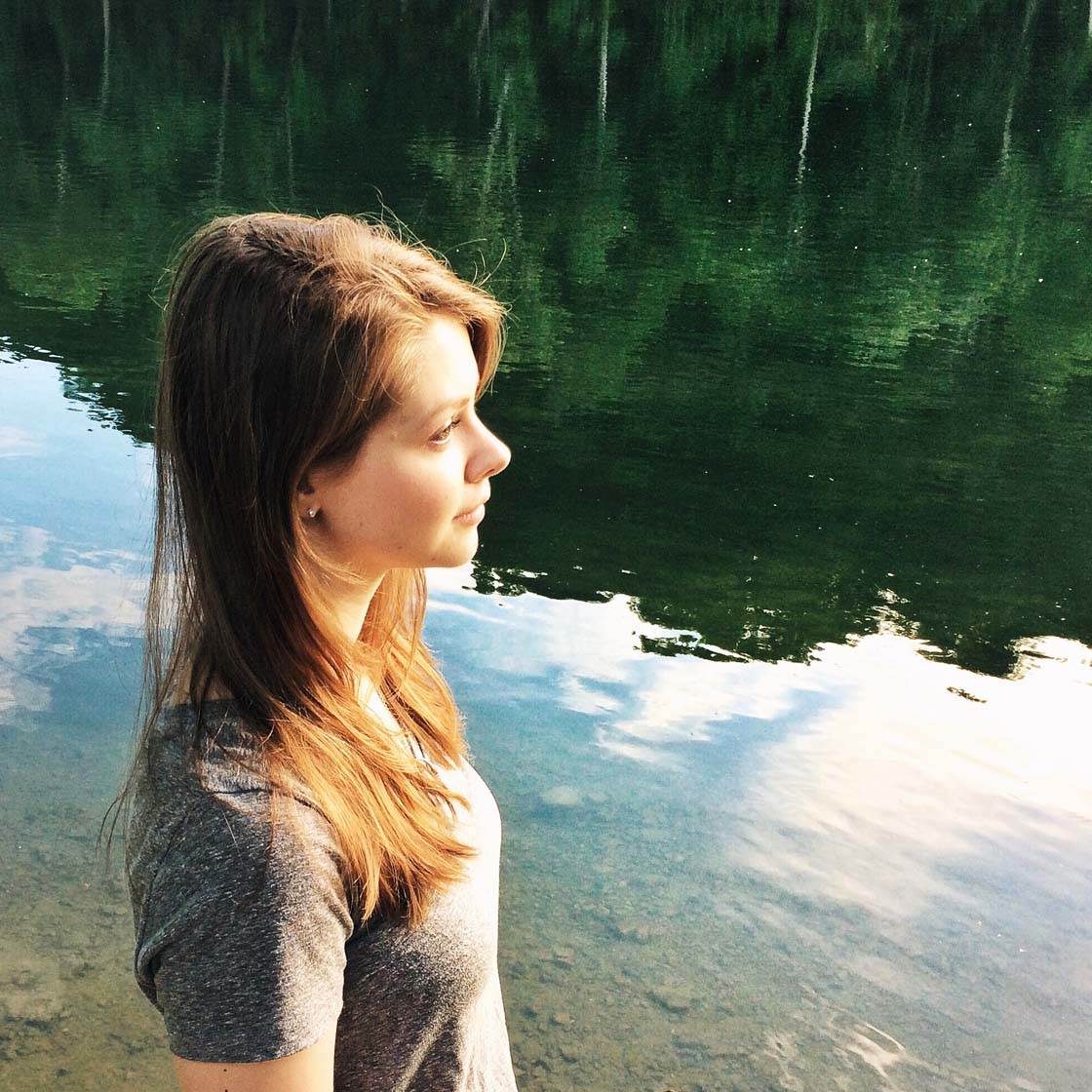
Capturing a reflection of trees and clouds in a lake can make an interesting background, especially if there are ripples in the water that will create an almost painterly effect.
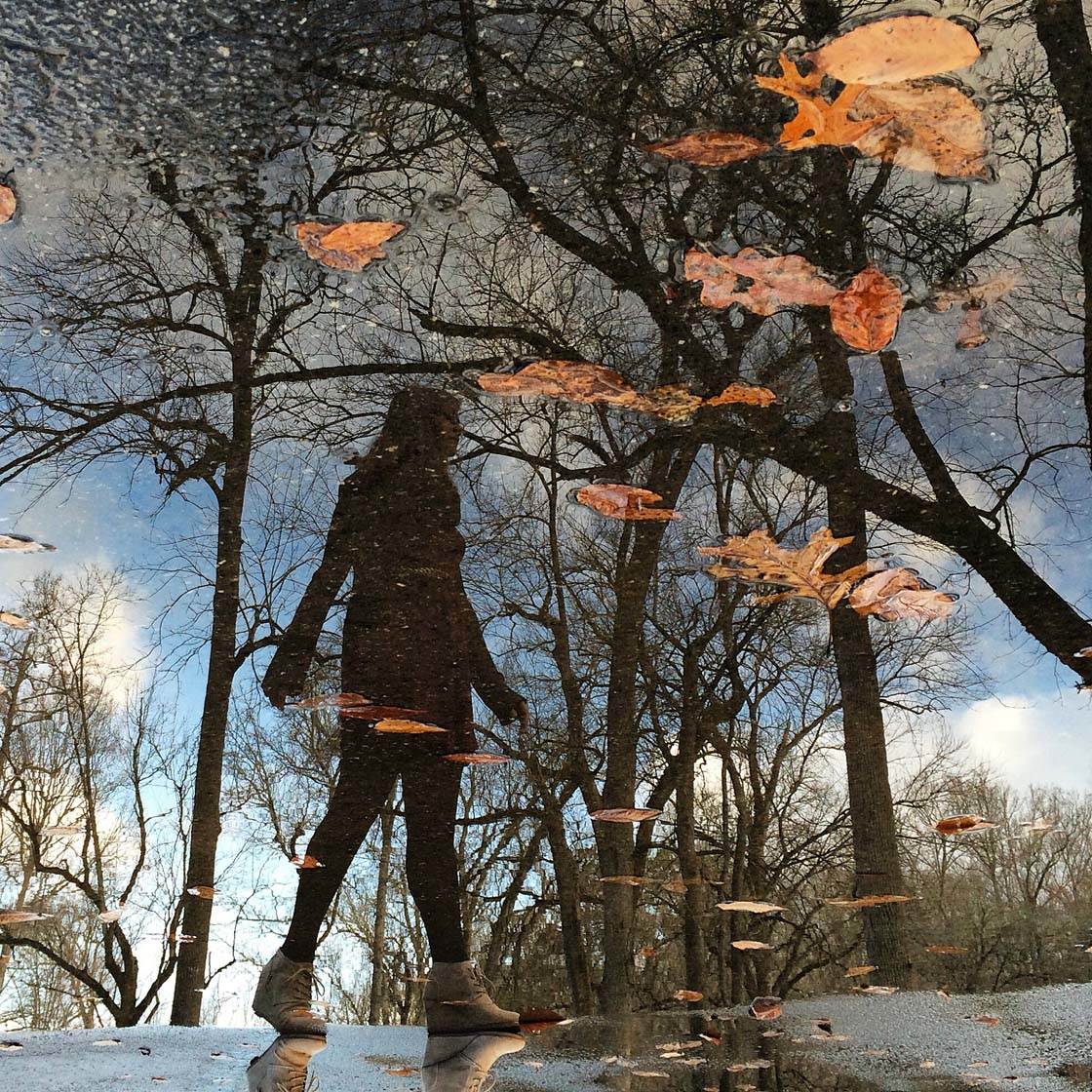
Even a small puddle in the foreground will allow you to capture a reflection of the background behind you in the water.
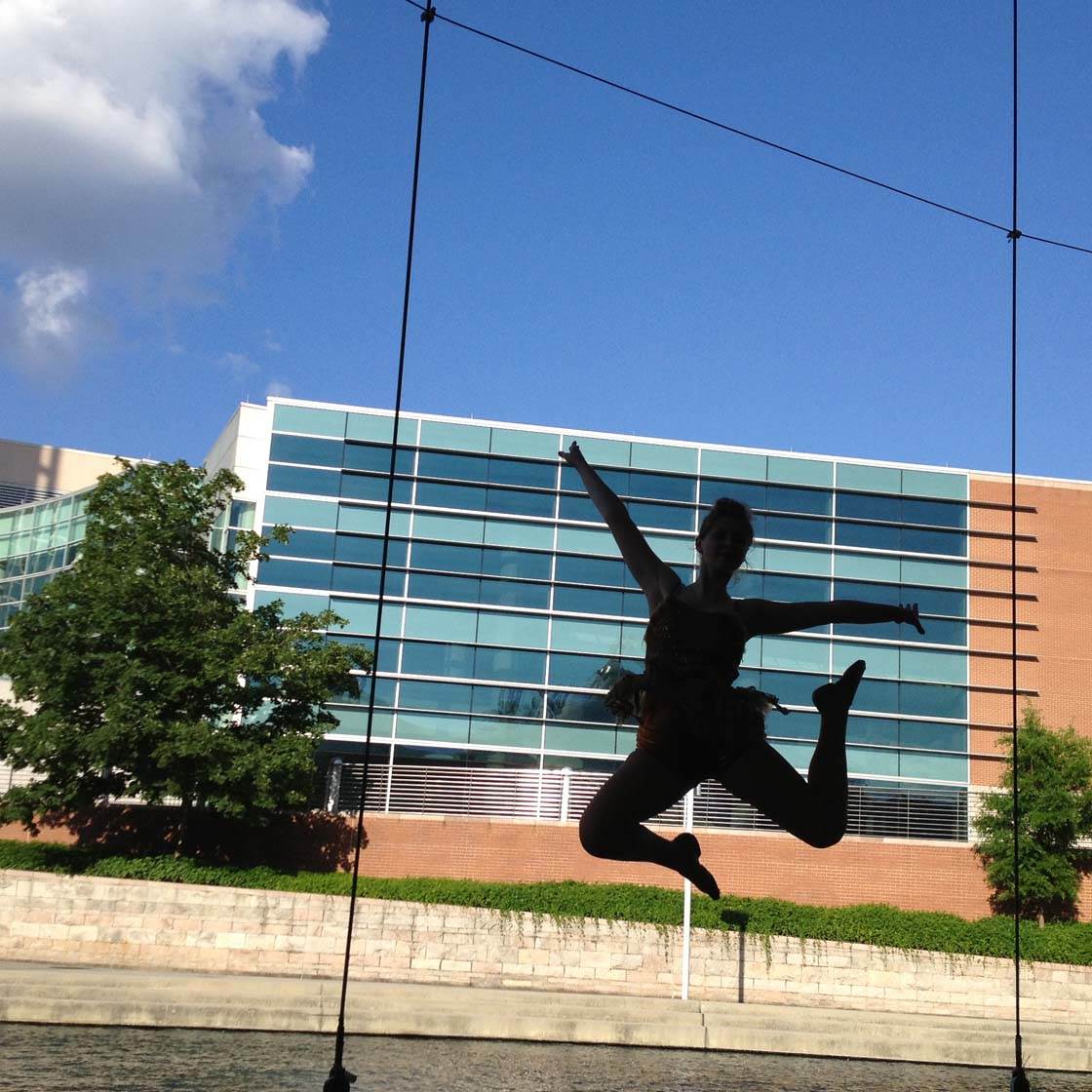
Glass and metallic buildings can also serve as a mirrored surface in which you can capture reflections of the scene behind you.
Another really creative technique that you could try is to capture a reflection of the background in a window, while your subject is looking out from inside.
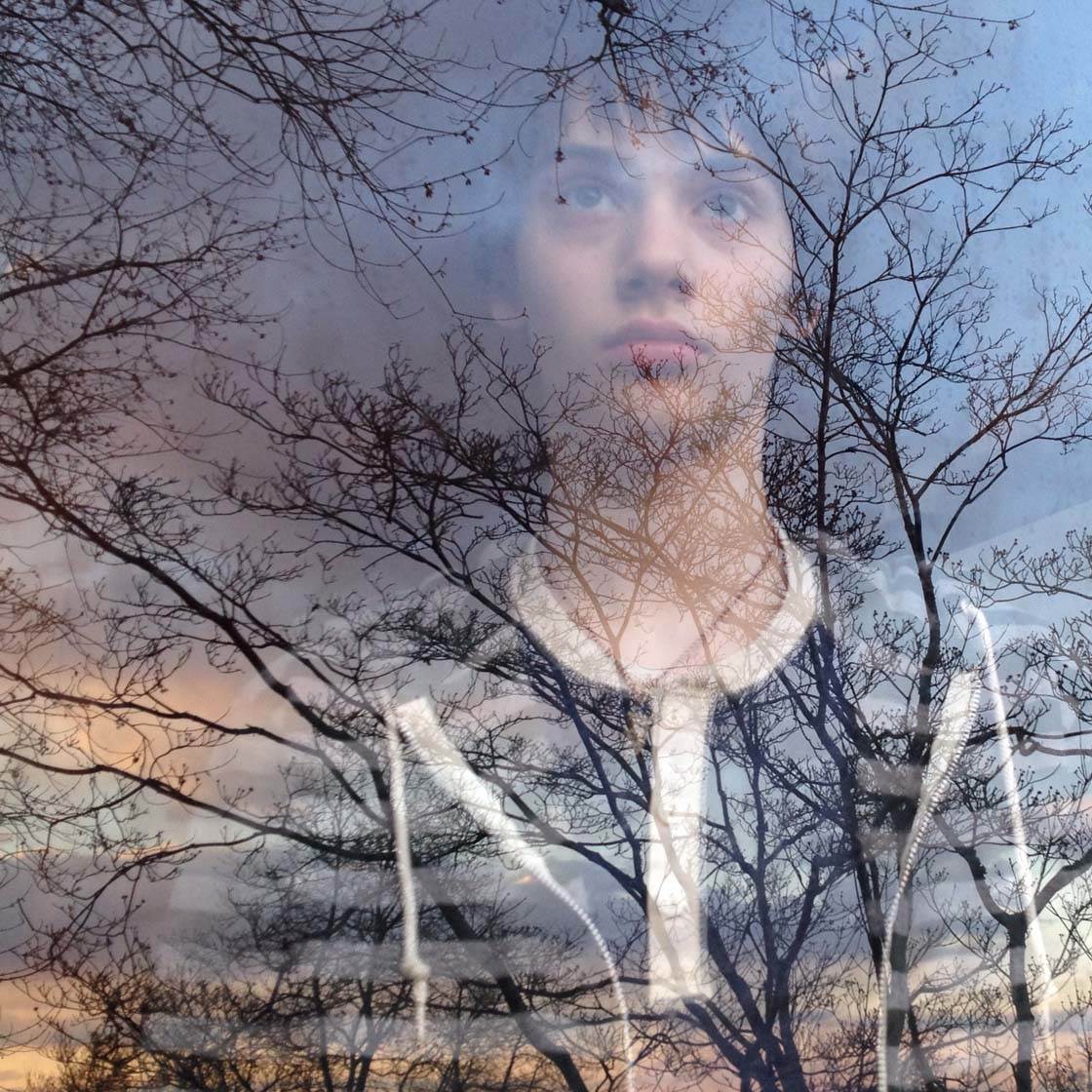
To create this effect, you need to shoot through a window from outside and have your subject looking through the window from inside. You obviously need something interesting behind you to reflect in the glass, such as trees or a pretty sky.
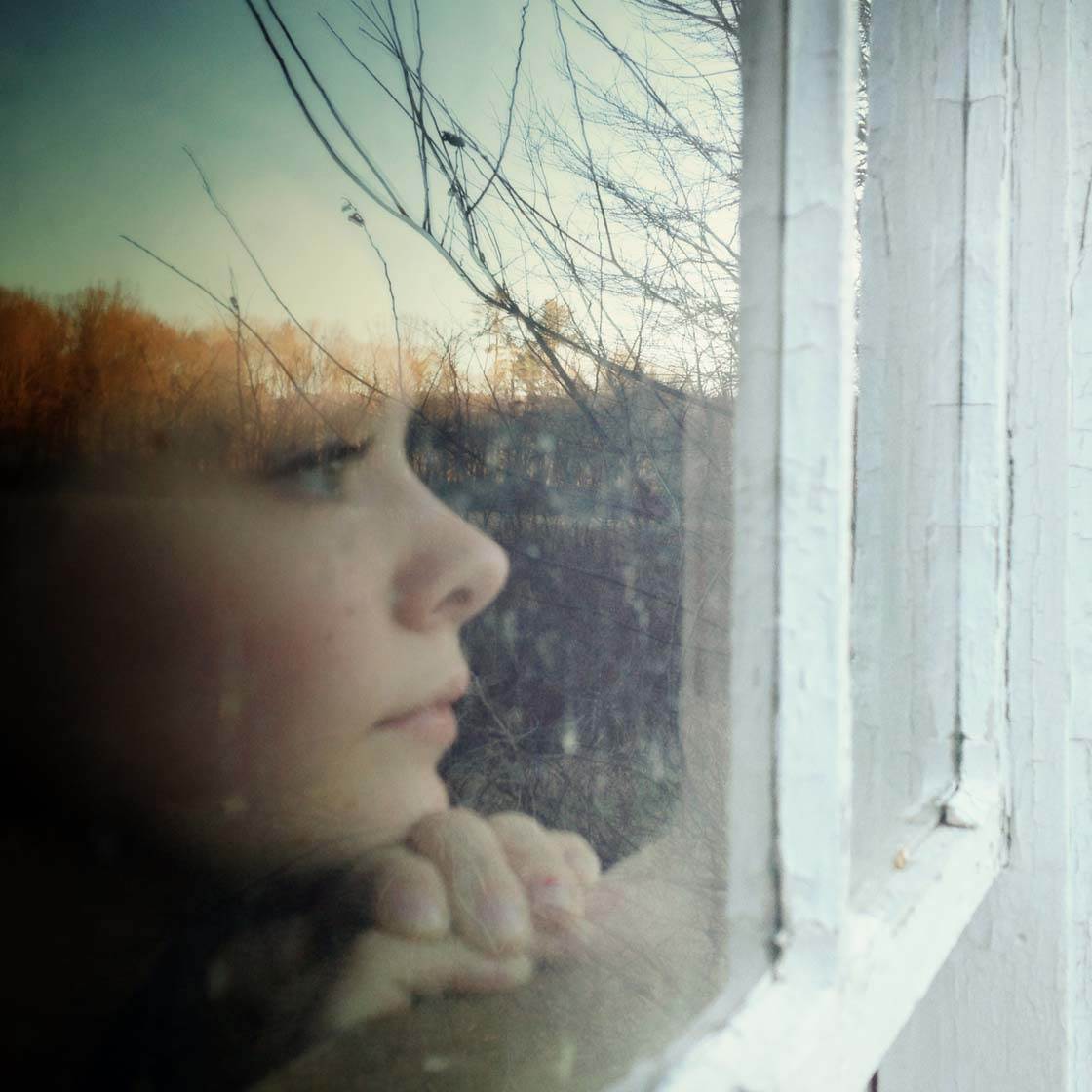
11. Use Foreground Interest Instead
Finally, instead of searching for a great background, how about using objects in the foreground instead? This approach can add a creative streak to your portrait photos, and it’s great for locations where you don’t have a suitable background.
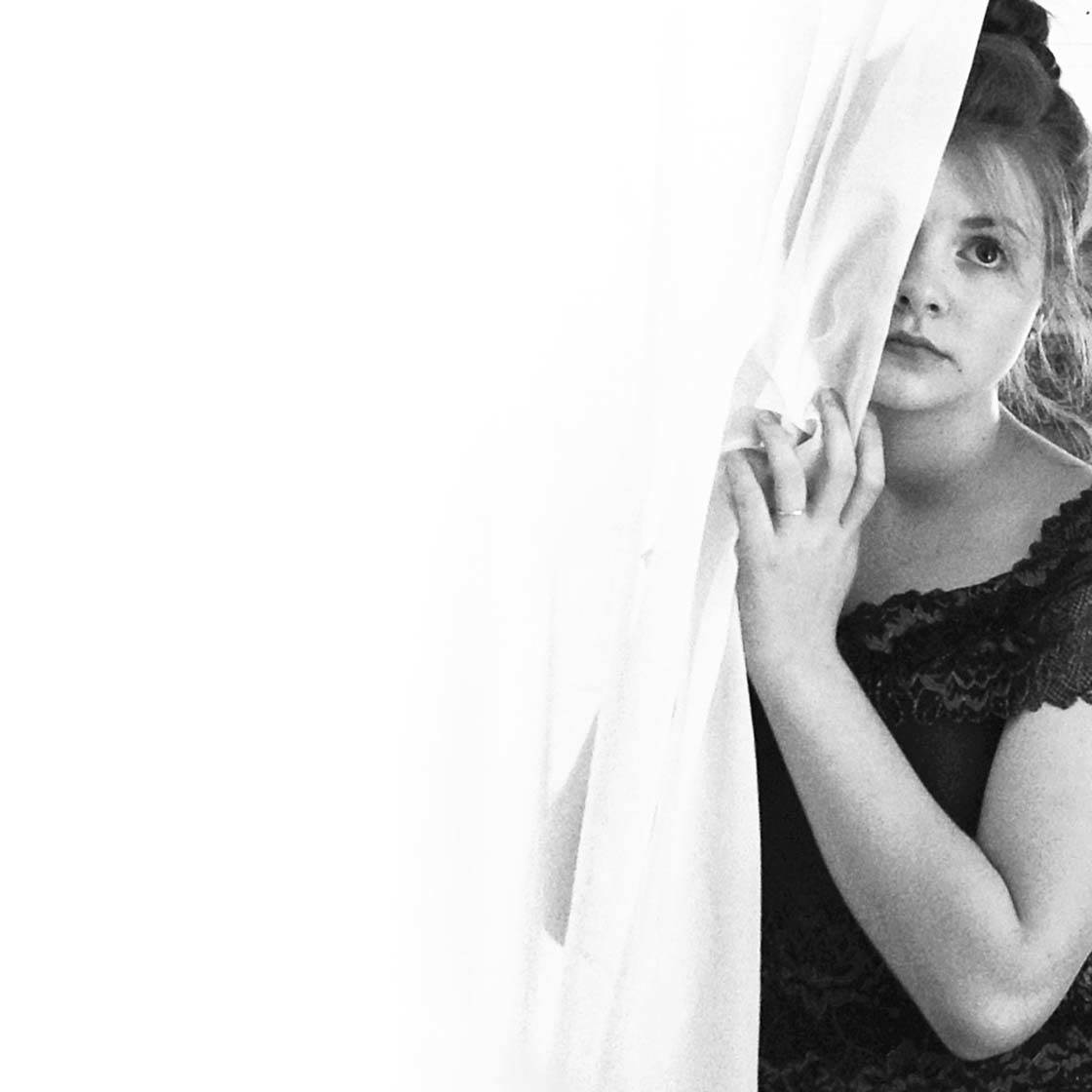
A really simple technique is to use a curtain. Simple position your subject in front of a window, and have them peeking out from behind the curtain.
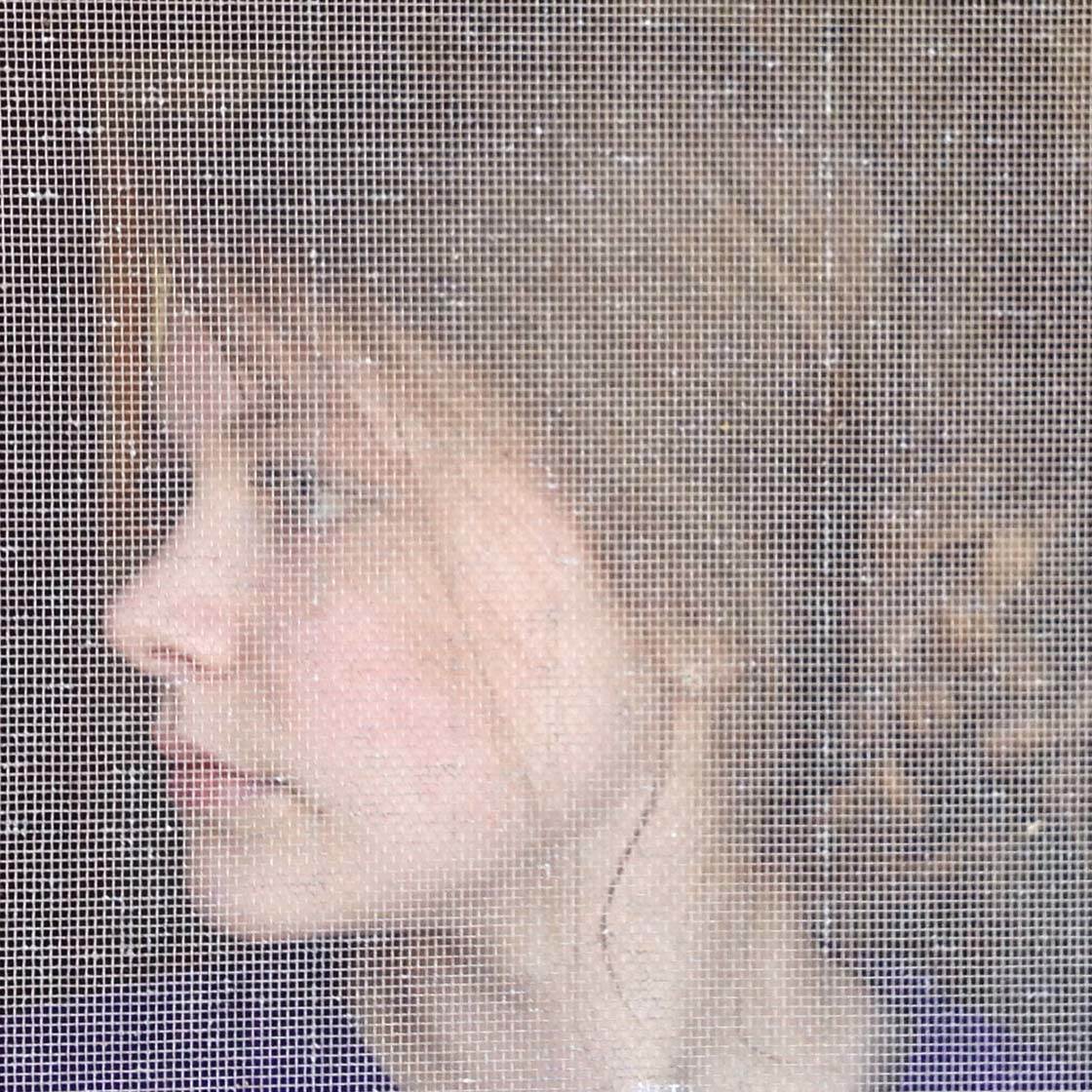
Semi-transparent materials with textures and patterns are also great for placing in front of your subject. In the photo above I photographed my daughter through a mesh screen, creating a wonderful textured feel. The photo looks as if a filter has been applied to it.
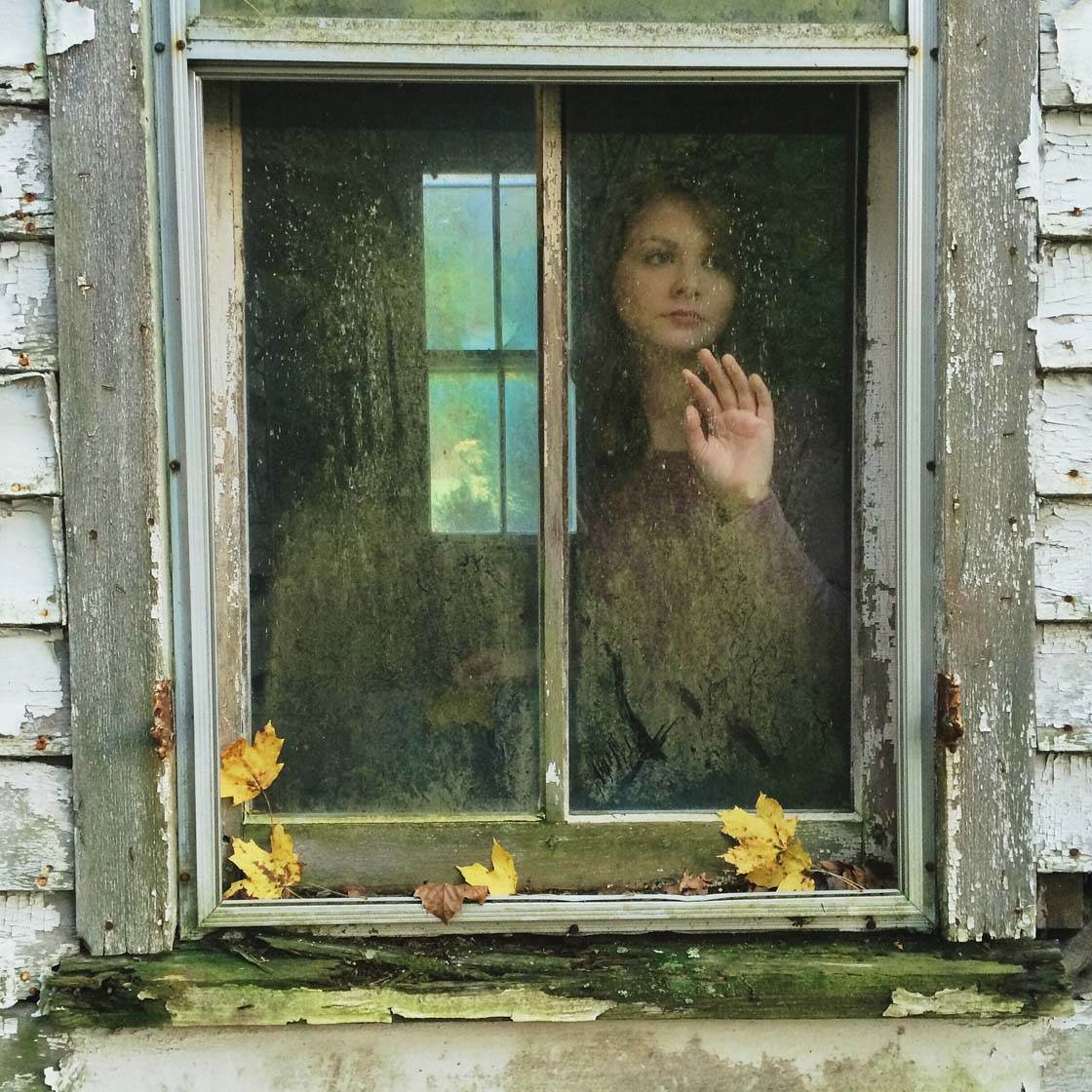
Taking photos through a window can often create create a more powerful story than if the subject was stood in front of it. You could shoot through a dirty window of an old abandoned building as shown above, or through a misty window as shown below.
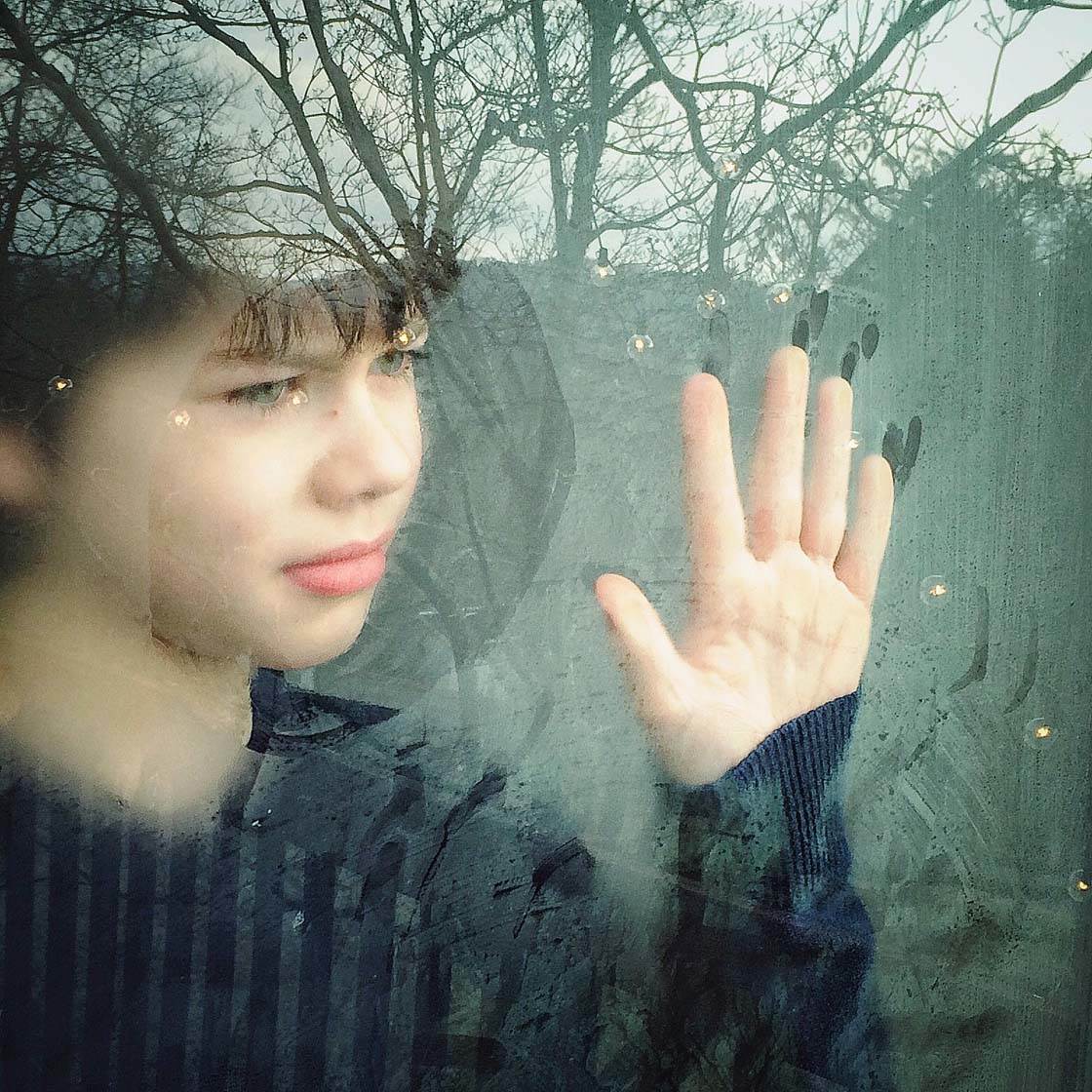
Keep your eyes peeled for anything of interest that could be used in the foreground of your portrait photos. Be as creative as you like!

My son found a disc of frozen water and had great fun looking at the world through the wavy surface. So I decided to use it in the foreground of this portrait photo, creating a truly unique image.
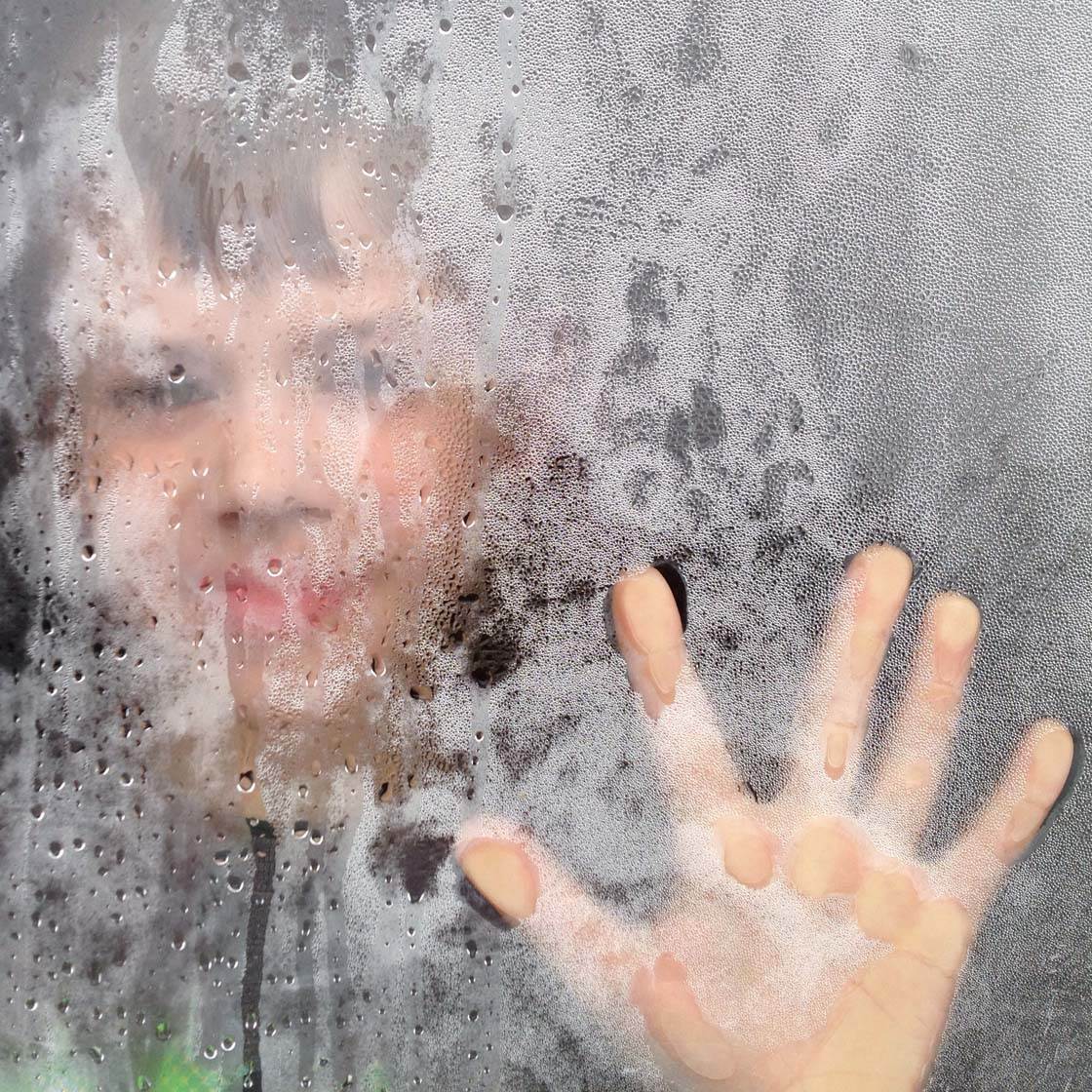
Look for foregrounds that will enhance the overall mood of the portrait such as frosted glass, sheer curtains, dirty windows, mesh screens, etc. These are all things that will make the portrait more fascinating and eye-catching.
Conclusion
There are so many different options for creating unique portrait photos with amazing backgrounds. At practically any location you should be able to use one or more of these 11 techniques to create a simple, yet highly effective backdrop.
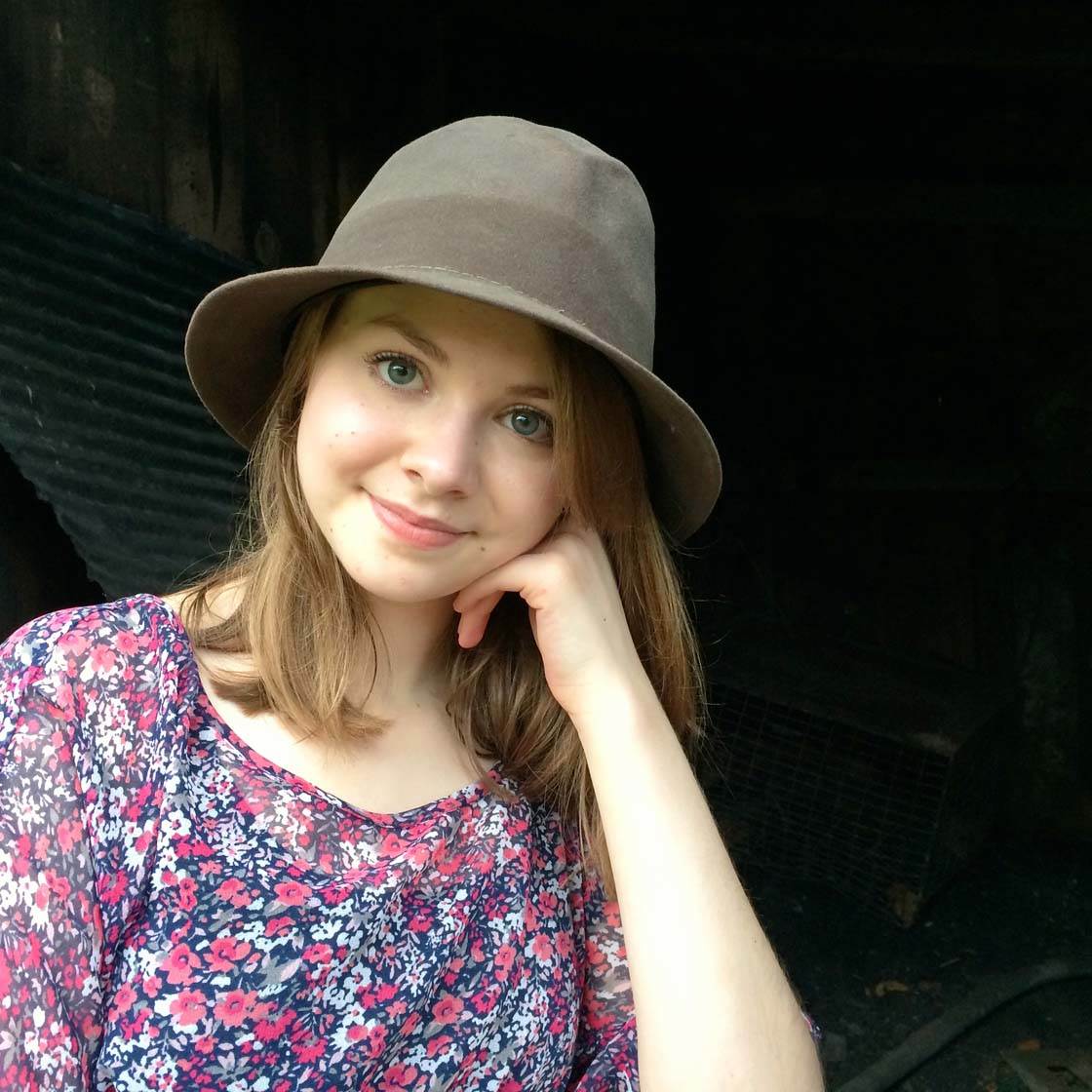
The first step is to remove any unwanted distractions. Then you can utilize color, texture, pattern, reflections, symmetry and light to create beautiful portrait photos that have a wonderful mood and storytelling element.
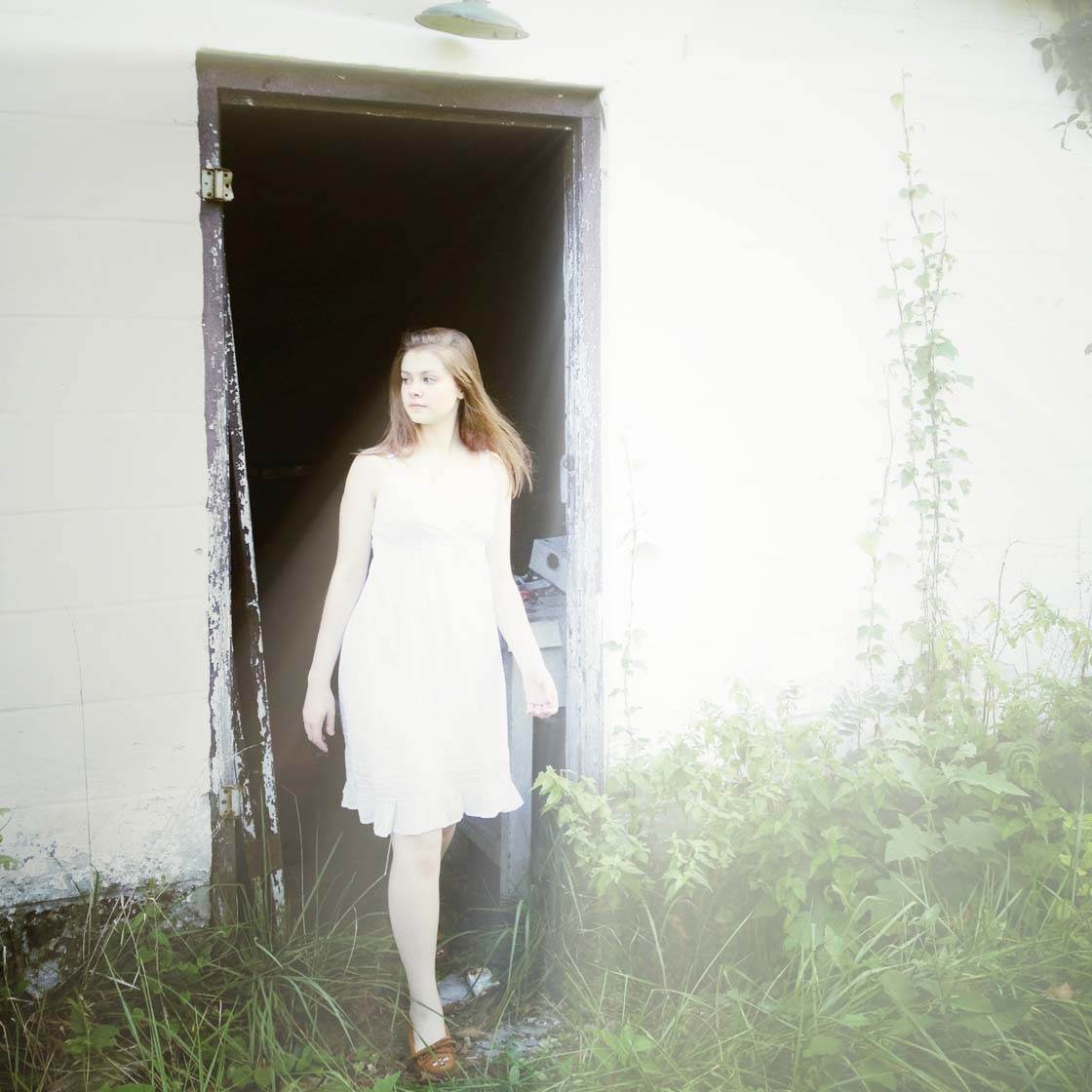
Using windows and doors to frame a person is a great way of drawing the viewer’s attention towards the subject.
And if you want to get really creative, try shooting through semi-transparent foreground objects to add a unique dimension to your images.
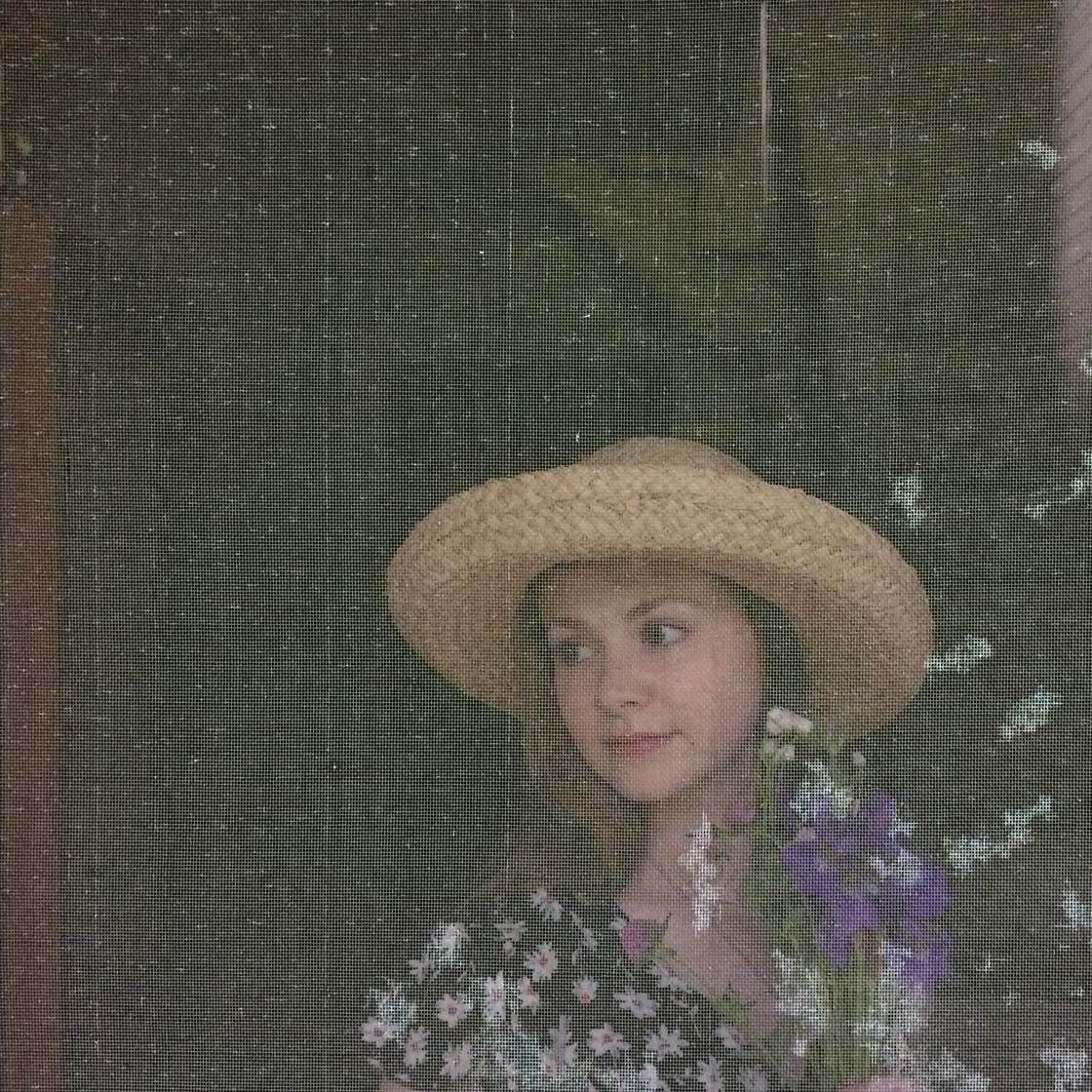
By using these highly effective techniques, you’ll soon be creating beautiful and captivating portraits photos with your iPhone!

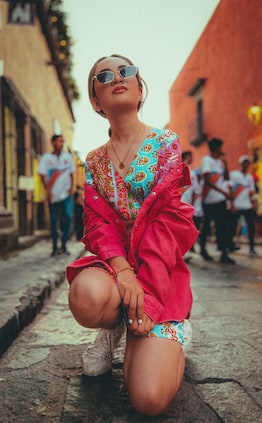
this is stunning. in love with these portraits. <3
Good tips